
Smarter email, faster business.
Auto-tag, parse, and respond to RFQs, quotes, orders, and more — instantly.
Trending
Categories
Aviation News. Powered by AI.
Verified by ePlane AI
AI fact-checks every story before it goes live.
Latest News
Trending News

Aviation Expert Richard Godfrey Attributes AI 171 Crash to RAT Deployment, Rules Out Pilot Error
Aviation Expert Richard Godfrey Attributes AI 171 Crash to RAT Deployment, Rules Out Pilot Error
Aviation expert Richard Godfrey has identified the automatic deployment of the Ram Air Turbine (RAT) as the primary cause of the Air India Flight 171 crash in Ahmedabad on June 12, dismissing widespread speculation that pilot error was to blame. In an interview with Geoffrey Thomas, Godfrey examined preliminary findings and data released by the Air Accident Investigation Bureau (AAIB) a month after the London-bound aircraft crashed, resulting in the deaths of all but one passenger.
Timeline and Key Findings
The AAIB’s preliminary report outlines a rapid sequence of events on the day of the crash. At 1:13 pm, the aircraft requested pushback and startup clearance, followed by Air Traffic Control (ATC) confirming the need for the full length of Runway 23 at 1:19 pm. Taxi clearance was granted at 1:25 pm, and by 1:33 pm, AI 171 was instructed to line up for takeoff. The flight was cleared for takeoff at 1:37 pm, but just two minutes after liftoff, the pilots issued a MAYDAY call before the aircraft crashed seconds later.
The report highlights that both engines shut down within one second of each other after the fuel supply was cut off. Cockpit voice recordings captured one pilot questioning the other about the engine shutdown, with the second pilot denying any action to cut the engines. Examination of the engines recovered from the crash site revealed they were in the “Run” position, and attempts had been made to relight them.
RAT Deployment and Technical Analysis
Godfrey’s detailed analysis, drawing on the preliminary report, flight data, and airport CCTV footage, revealed that the RAT was automatically deployed at approximately 1:38:47 pm. According to the data, both engines’ N2 values dropped below minimum idle speed at this time, triggering the RAT hydraulic pump to supply hydraulic power. The preliminary report included an image showing the RAT in its extended position but did not clarify the timing or cause of its deployment.
By synchronizing multiple data sources—including the flight data recorder (FDR) and ATC logs—Godfrey established that the RAT deployment occurred mere seconds before the crash. This timing strongly suggests a technical malfunction rather than any human intervention.
Conflicting Interpretations and Ongoing Investigation
Despite Godfrey’s findings, the investigation has been marked by conflicting interpretations. Some experts, including Captain Byron Bailey, have proposed the possibility of deliberate pilot action, even suggesting “suicide by the pilot” as a theory. However, Godfrey’s analysis, supported by the available data, firmly disputes this notion, attributing the crash to a technical failure centered on the RAT deployment.
In response to the incident, the U.S. Federal Aviation Administration (FAA) and Boeing reviewed the safety of fuel cutoff switch locks, which had come under scrutiny during the investigation. Both organizations have since affirmed the safety of these components.
The investigation into the AI 171 crash remains ongoing, with authorities yet to issue a definitive conclusion. For now, Godfrey’s assessment shifts the focus away from pilot error, underscoring the critical role of the RAT deployment in the tragic sequence of events.

AAMG Seeks to Acquire Lilium’s Assets and Expertise
AAMG Moves to Acquire Lilium’s Assets and Expertise
The Ambitious Air Mobility Group (AAMG) has announced its intention to acquire the intellectual property, assets, and testing facilities of Lilium, alongside retaining key technical and certification personnel. This proposed acquisition is aimed at advancing the development and certification of Lilium’s aircraft platform, with plans to establish a European supply chain to support future production should the deal be finalized.
Strategic Investment and Development Plans
Prior to Lilium entering insolvency proceedings, AAMG had already placed an order for 16 of the company’s aircraft and is now positioning itself to revive the enterprise. The group has declared it holds over €250 million in capital dedicated to this initiative, with potential access to an additional €500 million intended to support expansion efforts across Europe and internationally.
Dr. Robert Kamp, CEO and Senior Partner of AAMG, emphasized the significance of the technology developed in Bavaria, describing it as both groundbreaking and economically viable. He highlighted the platform as the culmination of years of work by some of the world’s most talented engineers and expressed enthusiasm about the opportunity to invest in and fully realize its potential.
Collaboration and Market Expansion
AAMG plans to work closely with a wide network of suppliers, regulatory bodies, and government partners to facilitate the integration and growth of Lilium’s technology. The group has also established a partnership with Japan’s AirMobility Inc., aiming to extend its reach into Asia-Pacific markets and coordinate international development efforts.
Challenges and Market Implications
Despite the promising outlook, the acquisition faces several challenges. Regulatory scrutiny is expected due to the complexity of integrating advanced aviation technologies and the necessity of certification across multiple jurisdictions. The process of merging Lilium’s expertise and assets with AAMG’s existing operations may present operational difficulties. Furthermore, competitors in the air mobility sector may respond with strategic initiatives such as forming new alliances or accelerating their own research and development programs.
Investor reaction will likely depend on perceptions of the strategic alignment and financial impact of the acquisition on AAMG. While the company’s substantial capital reserves and international ambitions provide a strong foundation, the ultimate success will depend on navigating regulatory, operational, and competitive challenges effectively.
Details regarding the sources of AAMG’s funding have not been disclosed. Nevertheless, the company’s international partnerships and expansion plans indicate a broader strategy to establish a leading position in the rapidly evolving air mobility market.

How the Boeing 777-300ER Compares to the Airbus A380 in Size
How the Boeing 777-300ER Compares to the Airbus A380 in Size
When discussing the largest commercial aircraft in operation today, the Boeing 777-300ER and the Airbus A380 are the two dominant models. Each represents a significant achievement in aerospace engineering but caters to different operational needs and market demands. Their differences in size, passenger capacity, and intended use highlight the distinct roles they play within global aviation.
Size and Capacity: A Detailed Comparison
The Airbus A380 holds the distinction of being the largest passenger airliner ever constructed. Its unique double-deck design enables it to accommodate up to 853 passengers in an all-economy configuration, or approximately 575 passengers in a more typical three-class layout. By contrast, the Boeing 777-300ER, the largest variant within the 777 family, can seat a maximum of 550 passengers in a high-density arrangement, though it more commonly carries around 396 passengers in a three-class configuration.
Physically, the A380 exceeds the 777-300ER in nearly every dimension except length. The 777-300ER measures 242 feet 4 inches (73.9 meters) in length, slightly longer than the A380’s 238 feet 7 inches (72.7 meters). However, the A380’s wingspan extends to 261 feet 8 inches (79.8 meters), significantly wider than the 777-300ER’s 212 feet 7 inches (64.8 meters). The A380 also stands taller at 79 feet (24.1 meters), compared to the 777-300ER’s height of 61 feet (18.5 meters). In terms of maximum takeoff weight, the A380’s 1,234,600 pounds (560,000 kilograms) far surpasses the 777-300ER’s 775,000 pounds (351,534 kilograms). These dimensions underscore the A380’s dominance in size and capacity, despite the 777-300ER’s advantage in length.
Operational Roles and Market Positioning
The Boeing 777-300ER was engineered to serve long-haul routes with a focus on operational efficiency and flexibility. Its twin-engine design allows it to operate from a broader range of airports, including those unable to accommodate the larger A380. This versatility, combined with lower operating costs and a moderate passenger capacity, makes the 777-300ER a preferred choice for airlines seeking to balance capacity with economic performance.
Conversely, the Airbus A380 was developed to maximize passenger volume on high-density international routes, primarily connecting major global hubs. Its immense size necessitates specialized airport infrastructure, limiting the number of airports capable of handling the aircraft. Nevertheless, the A380 remains a favored option for carriers aiming to transport large numbers of passengers efficiently on heavily trafficked routes.
Industry Response and Future Developments
The market’s response to these aircraft reflects their strategic roles within the aviation sector. Emirates, the largest operator of the A380, continues to invest in the superjumbo, with plans to upgrade its first-class suites and extend the aircraft’s operational lifespan through 2040. The airline has also expressed interest in Boeing’s developments, including visits to Boeing’s assembly facilities to monitor progress.
Meanwhile, other airlines are reassessing their fleet compositions. Kenya Airways, for example, is considering reintroducing the 777-300ER alongside exploring the Boeing 737 MAX, demonstrating the ongoing relevance of the 777 family. In response to Boeing’s advancements, Airbus is developing a stretched version of its A350 to compete directly with the forthcoming Boeing 777-9, highlighting the competitive dynamics shaping the large aircraft market.
Conclusion
While the Airbus A380 remains the world’s largest passenger aircraft by nearly every measure except length, the Boeing 777-300ER continues to hold a vital position in commercial aviation due to its versatility and efficiency. Both aircraft exemplify the evolving demands of the industry and maintain prominent roles in the global air travel landscape.
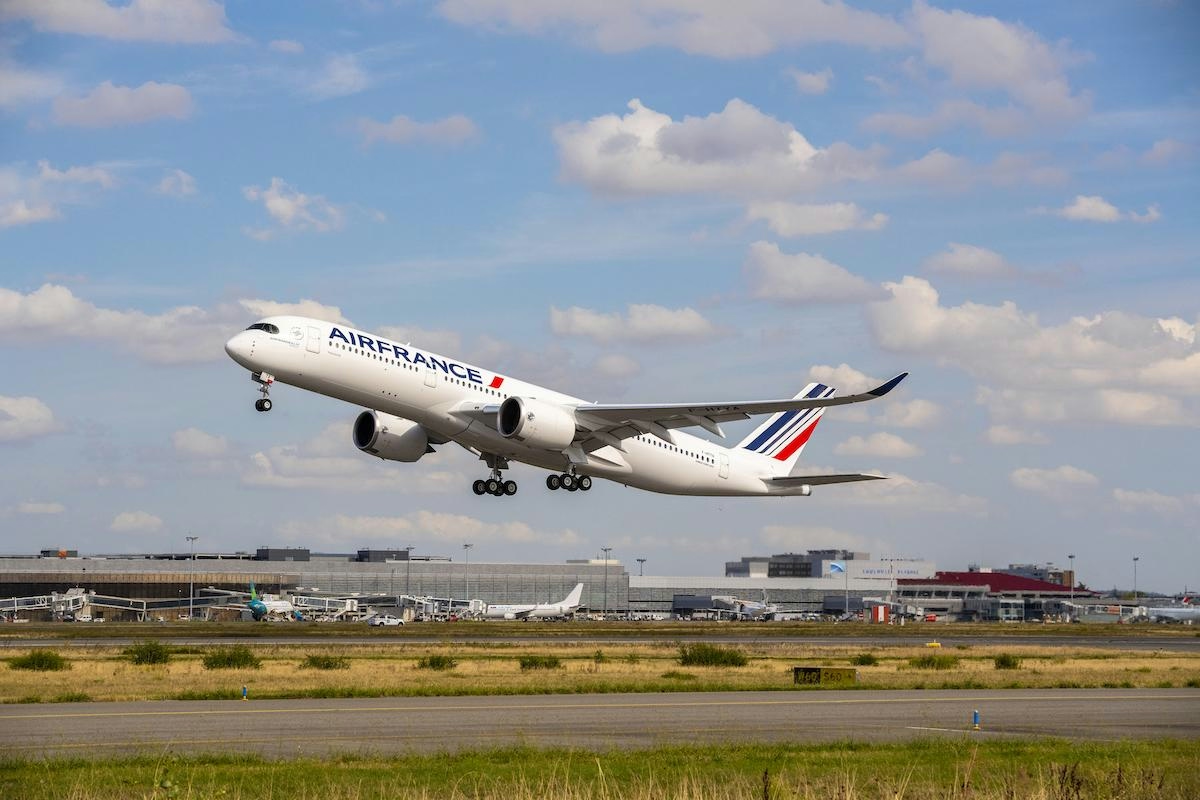
Air France-KLM Reduces Airbus A350-1000 Orders, Increases A350-900 Purchases
Air France-KLM Revises Airbus A350 Orders, Prioritizes A350-900 Over A350-1000
Air France-KLM is adjusting its widebody fleet strategy by converting a significant portion of its Airbus A350-1000 orders to the smaller A350-900 model, according to the latest data from Airbus’ order backlog. Initially, the Franco-Dutch airline group placed an order in 2023 for 50 A350 aircraft, consisting of 39 A350-900s and 11 A350-1000s. The recent revision involves converting eight of the A350-1000 orders into A350-900s. This strategic shift, first reported by FlightGlobal, comes two years after the original purchase and reflects a broader industry trend favoring more efficient and flexible aircraft.
Strategic Shift Toward Efficiency and Range
Air France-KLM’s decision highlights a preference for smaller-capacity aircraft with extended range capabilities. The A350-900 typically accommodates between 332 and 352 passengers in a three-class configuration and can operate nonstop for up to 9,700 nautical miles (18,000 kilometers). This makes it well-suited for a diverse range of routes, from short-haul to ultra-long-haul. In comparison, the larger A350-1000 seats between 375 and 400 passengers and offers approximately 40% more premium seating, but with a slightly reduced maximum range of 8,000 nautical miles.
Currently, Air France operates a fleet of 39 A350-900s, with an average aircraft age of 2.8 years. These aircraft are configured to carry 324 passengers, divided into 34 business class, 24 premium economy, and 266 economy seats. In preparation for KLM’s planned introduction of the A350 between 2026 and 2027, KLM pilots are undergoing training on Air France’s A350s as part of a pilot-sharing arrangement within the group.
Fleet Renewal and Environmental Objectives
The incoming A350s are intended to replace aging Airbus A330s and Boeing 777s across both Air France and KLM. Air France’s current widebody fleet includes 10 A330-200s with an average age of 22.6 years, alongside 62 Boeing 777s. KLM operates 11 A330s and 31 Boeing 777s. Benjamin Smith, CEO of Air France-KLM, has emphasized the A350’s advantages, including quieter operation, enhanced fuel efficiency, and lower operating costs compared to previous-generation aircraft. These attributes align with the group’s environmental commitments and economic goals.
Industry Implications and Market Response
Air France-KLM’s move away from the larger A350-1000 model may pose challenges for Airbus’s supply chain and could lead to discussions regarding production adjustments. The decision is likely to attract attention from industry analysts, as it signals a strategic pivot toward more versatile and efficient aircraft amid evolving market dynamics. Competitors such as Lufthansa and International Airlines Group (IAG) may reevaluate their own long-range fleet strategies in response, potentially influencing broader trends in aircraft procurement.
This development also raises important questions about the future viability of ultra-long-haul flights and the economic sustainability of larger aircraft in a market increasingly focused on operational flexibility and efficiency. Airlines continue to balance capacity and range considerations as they adapt to shifting passenger demand and operational realities.
Airbus Deliveries and Market Demand
Despite these shifts in airline preferences, Airbus reported delivering 67 aircraft to 41 customers in July 2025, underscoring sustained demand for new-generation widebody aircraft. Air France-KLM has yet to provide an official comment regarding the recent changes to its A350 order book.

How the General Electric GEnx Engine Transformed Boeing's Aircraft
How the General Electric GEnx Engine Transformed Boeing's Aircraft
The General Electric GEnx engine has emerged as a transformative force within Boeing’s aircraft portfolio, establishing itself as the fastest-selling and most widely used jet engine in history, with over 3,000 units currently in operation. Its integration into the Boeing 787 Dreamliner and 747-8 models has significantly enhanced aircraft performance while reshaping competitive dynamics across the aviation sector.
Technological Advancements and Environmental Benefits
Incorporating cutting-edge technology, the GEnx engine achieves a 1.4% annual reduction in carbon emissions alongside a 3% increase in yearly utilization compared to earlier engine generations. This improvement allows aircraft to remain operational for up to seven additional days annually, offering airlines a substantial boost in operational efficiency. A hallmark of the GEnx’s design is its pioneering use of carbon fiber composite materials in the fan casing and blades, a world first that results in a lighter, more corrosion-resistant, and quieter engine. These innovations not only reduce maintenance requirements but also enhance overall reliability, directly benefiting airline operations and sustainability goals.
Engineering Innovations and Performance Enhancements
Building upon the foundation of the GE90 engine, the GEnx introduces several engineering breakthroughs. The engine features carbon-fiber composite fan blades with a reduced blade count—18 instead of 22—further decreasing weight and improving aerodynamic efficiency. Notably, it incorporates the first FAA-approved 3D-printed components, such as the power door opening bracket (PDOS), introduced in 2018. The engine’s lean-burning twin-annular pre-swirl combustor significantly lowers nitrogen dioxide emissions, maintaining levels well below regulatory thresholds.
The GEnx-1B variant powers all Boeing 787 models, while the GEnx-2B is utilized on the 747-8 and 747-8F aircraft. Both variants deliver superior fuel efficiency and reduced operating costs. Advances such as next-generation 3D dynamics and titanium aluminide blades reduce engine weight by up to 300 pounds (136 kilograms), optimizing performance on long-haul flights. The GEnx-1B also achieved a 330-minute ETOPS (Extended-range Twin-engine Operational Performance Standards) rating following rigorous endurance testing, thereby expanding operational flexibility for airlines.
Market Impact and Boeing’s Financial Recovery
The technological progress embodied by the GEnx engine has elicited a strong market response. GE Aerospace’s improved profit outlook and increased engine deliveries reflect robust aftermarket demand, as airlines extend the service life of older aircraft amid production delays at Boeing and Airbus. This trend is exemplified by JetBlue’s recent divestment of CF34 engines during its transition to Airbus A220s, signaling shifts in market dynamics and growth in the secondary market for regional engines.
Boeing’s financial turnaround is underscored by higher aircraft deliveries and increased revenue, highlighting the GEnx engine’s role in this recovery. The ongoing production of the 787 Dreamliner and the final delivery of the 747-8 to Atlas Air in 2023 demonstrate sustained demand for aircraft equipped with GEnx technology.
Global Support and Future Prospects
General Electric’s extensive global support network, combined with software-driven maintenance solutions, ensures continued reliability and operational efficiency for airlines worldwide. As the aviation industry navigates evolving market conditions and increasingly stringent environmental standards, the GEnx engine remains a critical driver of efficiency, sustainability, and competitive advantage for Boeing and its customers.
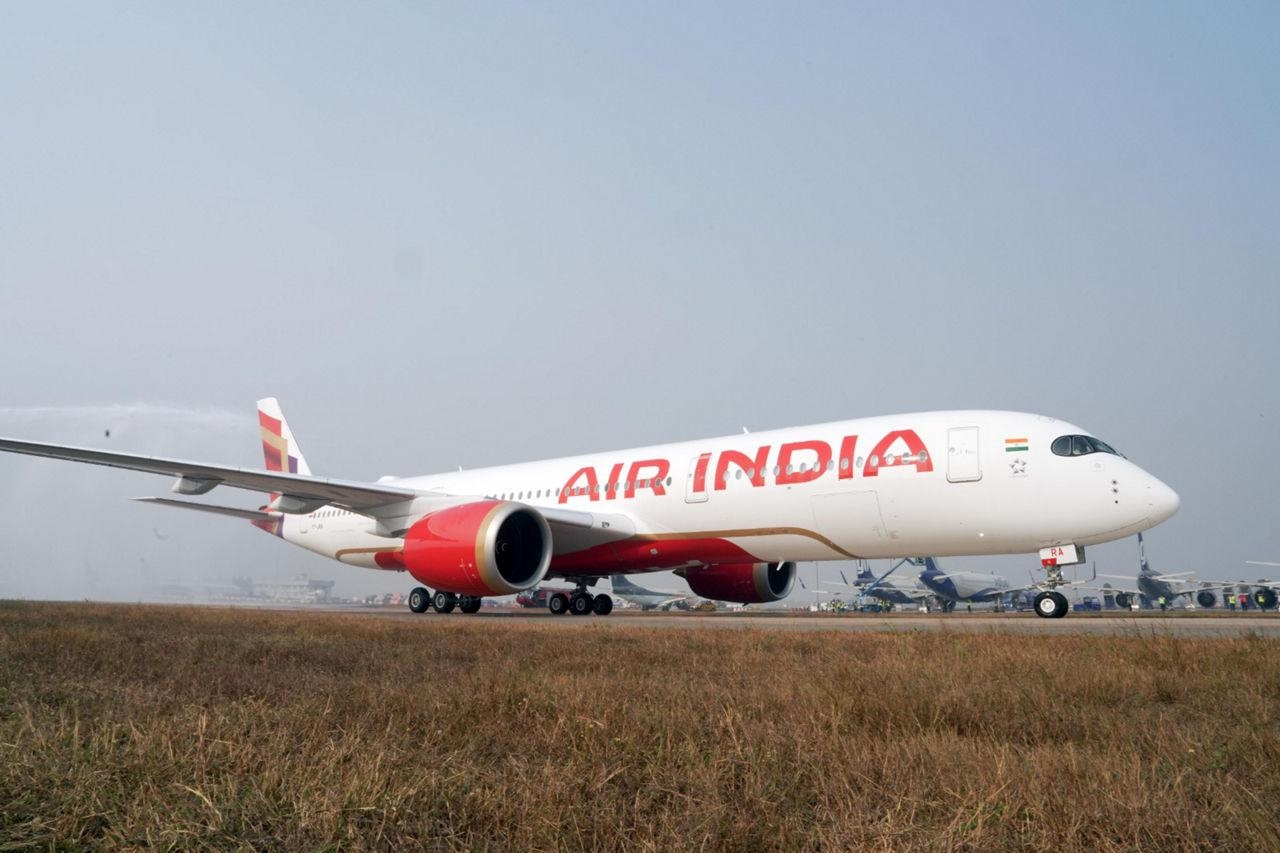
Air India Announces Delivery Schedule for A321neo, A350-1000, and 787-9 Aircraft
Air India Announces Delivery Schedule for A321neo, A350-1000, and 787-9 Aircraft
Major Fleet Modernization Underway
Air India Group, now under the ownership of the Tata Group, is advancing a landmark fleet renewal initiative that promises to transform its operational capabilities and competitive positioning within the Indian aviation sector. Central to this effort is an unprecedented order of 570 aircraft, among the largest in the history of commercial aviation. This extensive acquisition includes the latest models from Airbus and Boeing, notably the A321neo, A350-1000, 787-9 Dreamliner, and 777-9. These additions are expected to significantly expand Air India’s capacity and modernize its fleet.
Delivery Timeline and Deployment Plans
To date, the Air India Group—which comprises both Air India (AI) and Air India Express (IX)—has taken delivery of six Airbus A350-900s alongside more than 40 Boeing 737 MAX aircraft. The next phase of this fleet expansion is scheduled to commence in mid-2025, with the introduction of the first A321neo, A350-1000, and 787-9 Dreamliner aircraft. This phase represents a critical step in the airline’s strategy to increase capacity and enhance service offerings.
Air India Express will be the initial operator of the new A321neo, launching scheduled services from April 15, 2025. The inaugural routes will connect Delhi (DEL) with Bengaluru (BLR) and Srinagar (SXR), with subsequent expansions on April 20 to include Ayodhya (AYJ) and Jaipur (JAI). The A321neo will be configured with 180 economy seats and 12 business class seats, providing improved passenger options on key domestic routes. Currently, Air India operates two A321neos (registrations VT-RTC and VT-RTD) in a 192-seat dual-class layout.
Supply Chain Challenges and Operational Adjustments
Despite the progress, Air India continues to grapple with significant supply chain disruptions. CEO Campbell Wilson has acknowledged ongoing difficulties in procuring essential components such as engines, fuselages, and premium cabin seats. These challenges are expected to cause delivery delays from both Airbus and Boeing, potentially affecting the airline’s growth trajectory for the next four to five years. In response, Air India is extending the operational lifespan of older aircraft, which entails increased maintenance costs, and is facing obstacles in leasing additional planes due to global shortages. The airline is also exercising prudence regarding further Boeing orders amid manufacturing and regulatory constraints.
Widebody Fleet Expansion: A350-1000 and 787-9
The first A350-1000 destined for Air India is nearing completion at Airbus’s Toulouse facility and is anticipated to be delivered in 2026. Currently registered as F-WZFI, the aircraft will soon be re-registered under the VT-series for Indian operations. Concurrently, the initial Boeing 787-9 Dreamliners from the 2023 order are expected to arrive by the end of 2025. Three 787-9s are presently in production at Boeing’s Charleston, South Carolina plant, equipped with General Electric GEnx-1B engines.
Order Composition and Market Implications
Air India’s comprehensive 570-aircraft order includes 20 A350-900s, 20 A350-1000s, 140 A320neos, and 70 A321neos from Airbus, alongside 20 787-9 Dreamliners, 10 777X, and 190 737-8 MAX aircraft from Boeing. Additionally, a 2024 order comprises 10 more A350s and 90 A320 Family aircraft. This sweeping modernization is anticipated to provoke strategic responses from rival carriers, who may reassess their fleet plans in light of Air India’s expanded capacity. Industry analysts expect this development to intensify competition and elevate passenger service standards across the Indian aviation market.
Commitment to Sustainability and Efficiency
Air India’s investment in next-generation aircraft reflects a strong commitment to operational efficiency, passenger comfort, and environmental stewardship. The new A350 and 787-9 models offer substantial fuel savings and reduced emissions, aligning with global efforts to promote sustainable aviation. As these aircraft enter service from mid-2025 onward, Air India is positioned to lead the industry’s transition toward eco-friendly, high-capacity air travel.
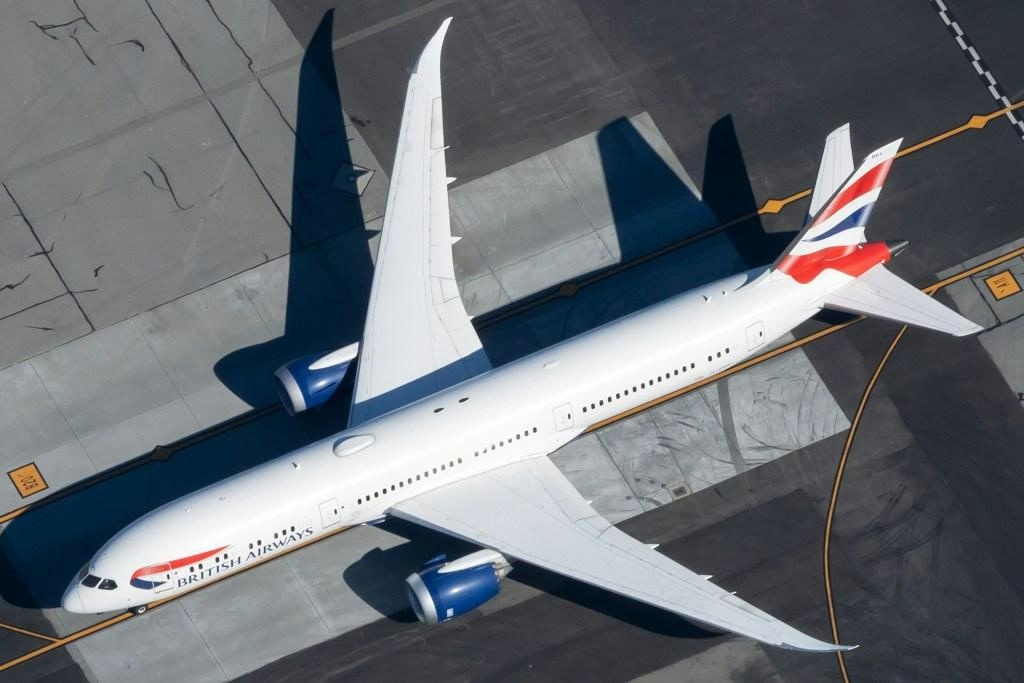
IAG Unveils 29 Startups Selected for 2025 Aviation Accelerator
IAG Unveils 29 Startups Selected for 2025 Aviation Accelerator
International Airlines Group (IAG) has revealed the selection of 29 startups for its 2025 Aviation Accelerator, marking a significant expansion that more than doubles last year’s intake as the program enters its ninth year. This enlarged cohort underscores the increasing prominence of artificial intelligence and sustainability-driven innovation within the aviation sector. As the parent company of British Airways and Iberia, IAG is making its largest investment to date in AI and climate technology.
Dual-Track Program Reflects Strategic Focus
The startups chosen for this year’s program represent 11 countries and, for the first time, are organized into two distinct tracks. The newly introduced “Discover” track is designed for early-stage startups, with a particular emphasis on those developing sustainable aviation fuel (SAF) and energy transition technologies. Fifteen companies will engage in a six-month mentoring program aimed at preparing them for potential future deployment within the industry. Concurrently, the “Deploy” track offers a commercially oriented, 12-week proof-of-concept opportunity in collaboration with IAG’s operating companies.
The IAGi Accelerator, the group’s flagship innovation initiative, seeks to accelerate collaboration with startups across six key areas, including AI, robotics, sustainability, and next-generation computing. Nisha Basson-Mugnier, IAG’s innovation principal, explained the motivation behind the dual-track approach, stating, “We saw the opportunity to engage with early-stage deep-tech startups in a better way. We’ve worked with these types of companies before in our traditional format, but launched the Discover track to reflect how much activity and innovation we’re now seeing—especially in the energy transition space.”
Addressing Industry Challenges Amid Growing Regulatory Pressure
The urgency surrounding sustainable aviation fuel is intensifying, as it is widely regarded as the most scalable near-term solution for decarbonizing long-haul flights. Regulatory frameworks are tightening, with both the European Union and the United Kingdom moving toward mandates requiring SAF usage. This regulatory momentum is prompting airline groups like IAG to engage with promising startups earlier in their development cycles.
Despite the program’s growth, the accelerator faces significant challenges. The aviation startup ecosystem is becoming increasingly crowded, with competition not only among startups but also from established industry players. Market saturation and the imperative for participating startups to scale effectively may test the program’s capacity to generate meaningful outcomes. At the same time, the sector’s competitiveness is attracting heightened investor interest in innovative aviation technologies. IAG’s expanded commitment may also spur competitors to forge strategic partnerships or accelerate their own technology development initiatives.
As the 2025 cohort embarks on the program, the IAG Aviation Accelerator remains a key indicator of industry trends, highlighting the direction of airline innovation and the technologies gaining momentum. The group’s increased investment reflects both the opportunities and the complexities confronting aviation as it adapts to a rapidly evolving technological and regulatory environment.
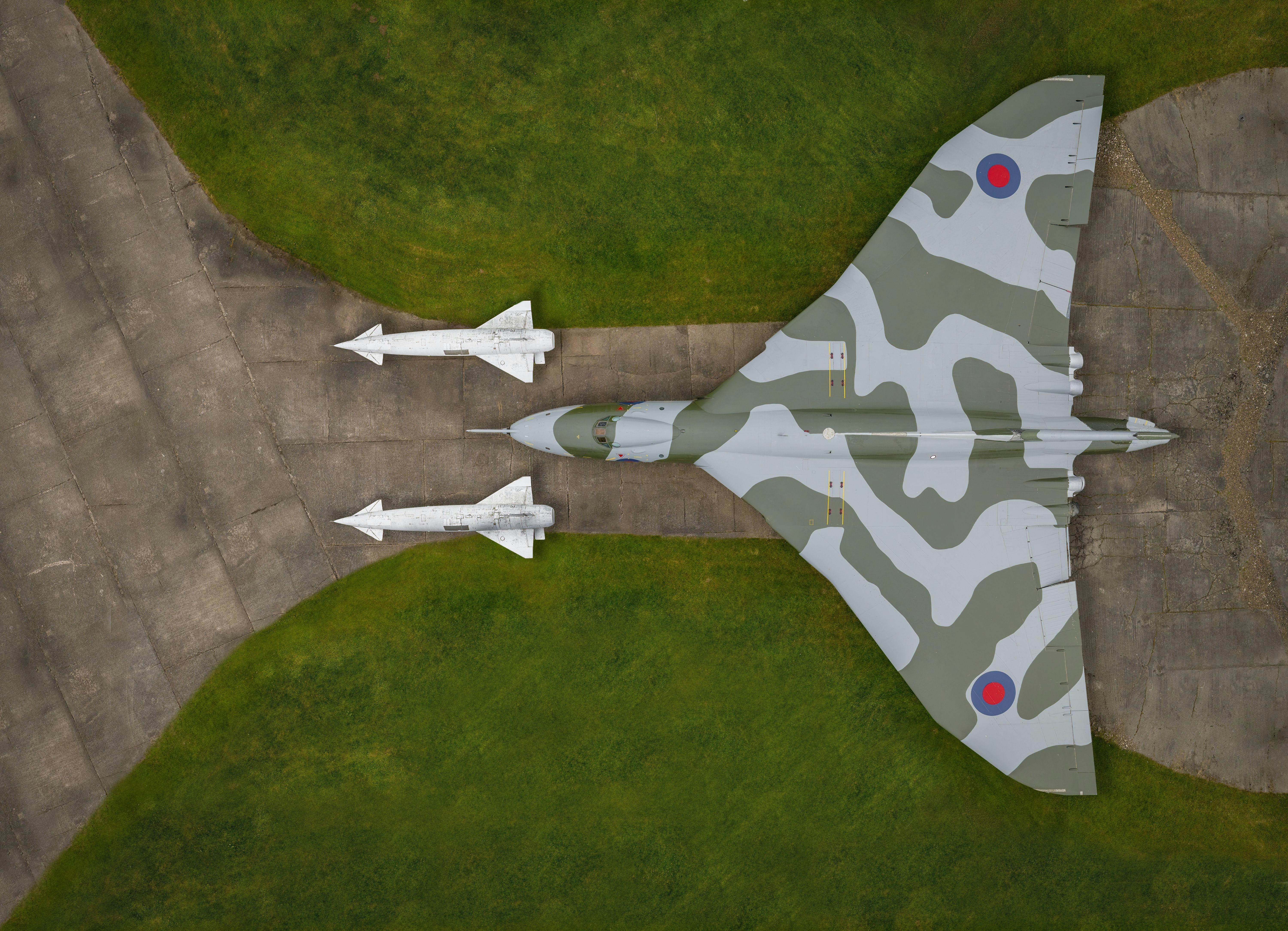
Innovation and Aerodynamics in the Design of the Avro Vulcan’s Wing
Innovation and Aerodynamics in the Design of the Avro Vulcan’s Wing
The Avro Vulcan, colloquially known as the “Tin Triangle,” was far more than a mere delta-wing bomber. Its distinctive shape concealed a host of aerodynamic innovations, rigorous experimentation, and technical refinements that distinguished it during Britain’s postwar advancement of strategic bombers. As a key component of the V-bomber force, the Vulcan embodied a significant leap in aerodynamic science, driven by the pressing Cold War demands for speed, altitude, and survivability.
Dr. Steve Liddle, Vulcan to the Sky Trustee and Principal Aerodynamicist at Visa Cash App RB F1 Team, has revisited this critical period in British aviation history through detailed technical reflections. His insights draw upon rare archival materials, including declassified research from the Royal Aircraft Establishment (RAE) at Farnborough during the early 1950s.
Pushing the Boundaries of Aerodynamics
The Vulcan’s design was fundamentally shaped by the need to surpass and evade increasingly sophisticated enemy defenses. Achieving the required high speeds and altitudes necessitated an unprecedented level of aerodynamic sophistication in bomber design. A central challenge was managing airflow at high subsonic and transonic speeds. Early flight tests involving the Avro 707 and Vulcan prototypes revealed severe buffet caused by shock-induced flow separation, a phenomenon where the wing abruptly lost lift as airflow broke down.
To overcome this, engineers at the RAE undertook extensive wind tunnel testing, culminating in the publication of Technical Memoranda 441 in 1955. Under the leadership of aerodynamicist Ken Newby, the research focused on modifications to the Vulcan’s wing leading edge. Three designs were evaluated: a short extension, a long extension, and a curved long extension. The long extension, based on the RAE 101 airfoil, emerged as the most effective, facilitating efficient supersonic airflow expansion and pushing the buffet boundary further back. These refinements, combined with the addition of vortex generators positioned at 25% chord to energize airflow, were ultimately incorporated into production aircraft.
Innovation Amid Complexity and Risk
The rapid pace of the Vulcan’s development meant that some aircraft were constructed before aerodynamic refinements were fully finalized, reflecting both the urgency and confidence in ongoing research. However, integrating advanced aerodynamic features introduced considerable complexity. Balancing structural integrity and performance while adopting novel solutions presented significant technical risks, and the process was not without controversy. Certain aerodynamic innovations, such as vortex generators, were even tested in flight prior to wind tunnel validation—an approach that would be considered highly unconventional in today’s risk-averse engineering environment.
Reactions within the market to such innovation were mixed. While some stakeholders acknowledged the potential for enhanced efficiency and performance, others voiced concerns over increased costs and technical uncertainties. The experiences of contemporaries underscored these risks: for instance, the Gloster Javelin, a Vulcan contemporary, suffered from poor transonic performance due to a less advanced wing design. More recently, companies like Lockheed Martin have encountered significant losses linked to design challenges and performance issues in cutting-edge aviation projects, illustrating the persistent tension between innovation and risk.
A Lasting Legacy
Despite these challenges, the Vulcan’s refined wing design and buried engines delivered a distinct aerodynamic advantage, ensuring stable and efficient airflow at high speeds. The aircraft’s enduring legacy stands as a testament to the boldness and ingenuity of its designers—engineers who skillfully balanced innovation, risk, and performance to create one of the most iconic bombers of the jet age.
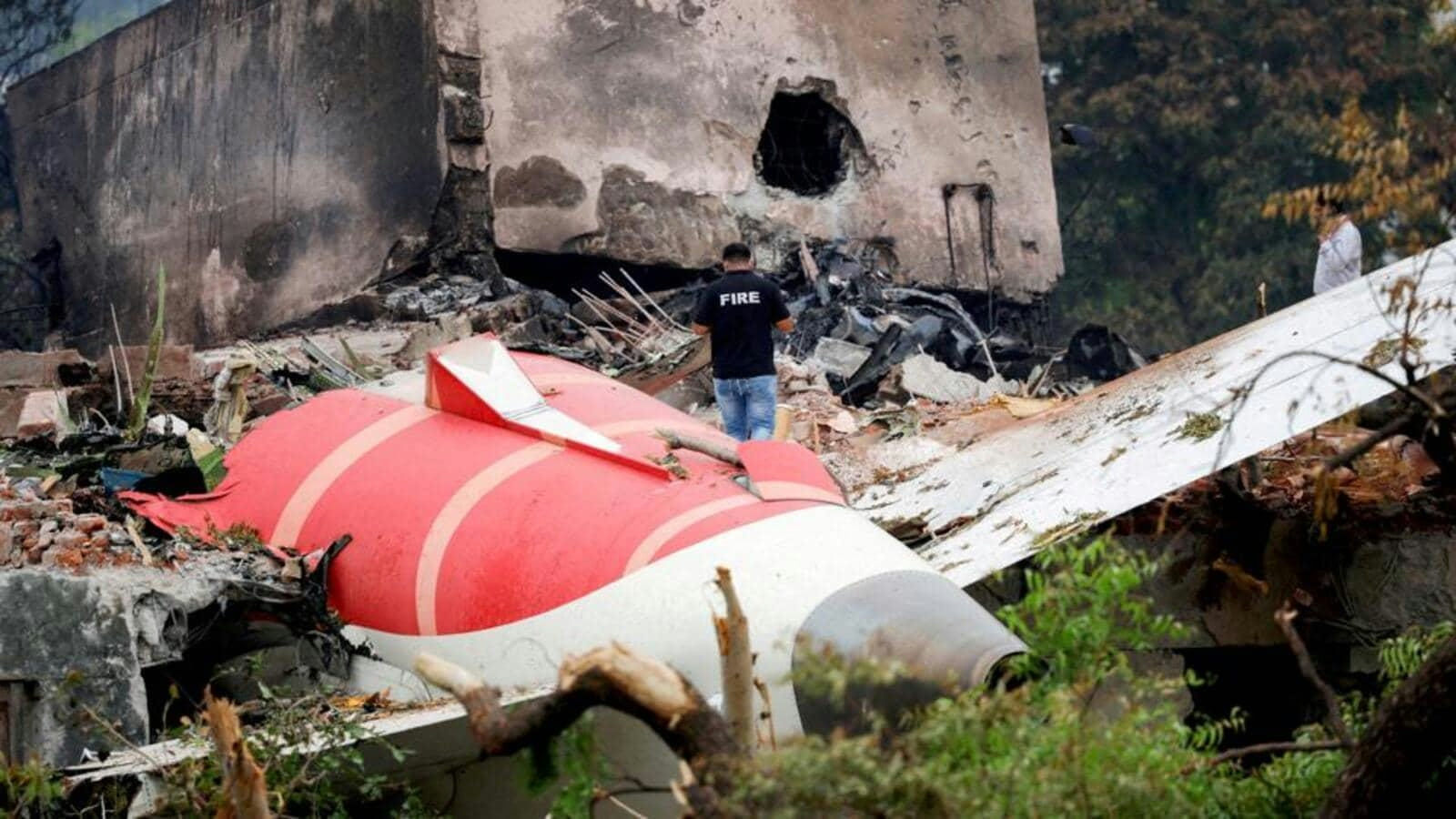
US Aviation Lawyer Requests AI 171 Data
US Aviation Lawyer Seeks Access to AI 171 Flight Data Amid Legal and Regulatory Challenges
Advocacy for Victims’ Families
In Ahmedabad, Mike Andrews, a US aviation lawyer from the Beasley Allen Law Firm, has intensified efforts to obtain critical flight data related to the AI171 crash. Representing more than 70 families—primarily from Gujarat and some from the United Kingdom—Andrews met with victims’ relatives in Diu and Ahmedabad on Sunday. His objective is to secure access to cockpit recordings and black box data, which he believes are essential for providing closure to the families and ensuring accountability for the tragedy.
Drawing on his experience representing families affected by the 2019 Ethiopian Airlines Boeing 737 MAX 8 disaster, Andrews emphasized the importance of understanding the precise sequence of events that led to the AI171 crash. “We are seeking the cockpit and black box data to understand what happened during the flight—what caused it, at what point the problems started, whether it was the aircraft, pilots, or maintenance. So many things could have gone wrong,” he explained.
Technical Complexities and Investigative Focus
Andrews highlighted the technical intricacies of the Boeing 787, describing it as “one of the most complicated, complex, electrically driven flying computers.” He drew parallels to the 2019 crash, where a malfunction in the throttle control system resulted in dual-engine failure, noting the need to determine if similar computer-driven decisions contributed to the AI171 incident.
A particular area of concern is the potential impact of moisture or water on the aircraft’s electronic systems. Andrews pointed out that moisture-induced short circuits could disrupt flight operations, including engine shutdowns. Referencing media reports suggesting the possible deactivation of the fuel switch, he stressed that the flight data would be crucial in clarifying these issues.
Legal and Regulatory Obstacles
Despite the urgency, Andrews’ request for access to the AI171 flight data faces significant hurdles. Jurisdictional complexities, data privacy regulations, and the necessity of cooperation from Indian authorities pose challenges to obtaining the information. The Aircraft Accident Investigation Bureau (AAIB) of India has urged patience as the investigation continues, signaling a cautious approach that may delay the release of data. These developments have sparked broader discussions about data transparency and aviation safety protocols, with industry stakeholders advocating for enhanced data protection and stricter safety measures.
Andrews indicated that his team is pursuing multiple channels to acquire the data. “We will first approach Air India for the data. Approaching the judiciary and authorities will be the later option,” he said. The ongoing investigation and associated legal complexities are likely to influence market perceptions of the airlines and legal entities involved.
Engagement with Survivors and Families
During his visit to Diu, Andrews met with Vishwaskumar Ramesh, the sole survivor of the crash, at his home. “We were approached by community leaders who asked us to meet Ramesh, as he does not meet or talk to anyone. It was a moving experience,” Andrews remarked, clarifying that the meeting was intended as a gesture of support rather than a legal engagement.
Andrews also visited the crash site in Meghaninagar in July and continues to engage with families affected by the tragedy. While some have received compensation, many are still awaiting resolution. “They deserve closure,” he affirmed, underscoring the ongoing quest for answers and justice.
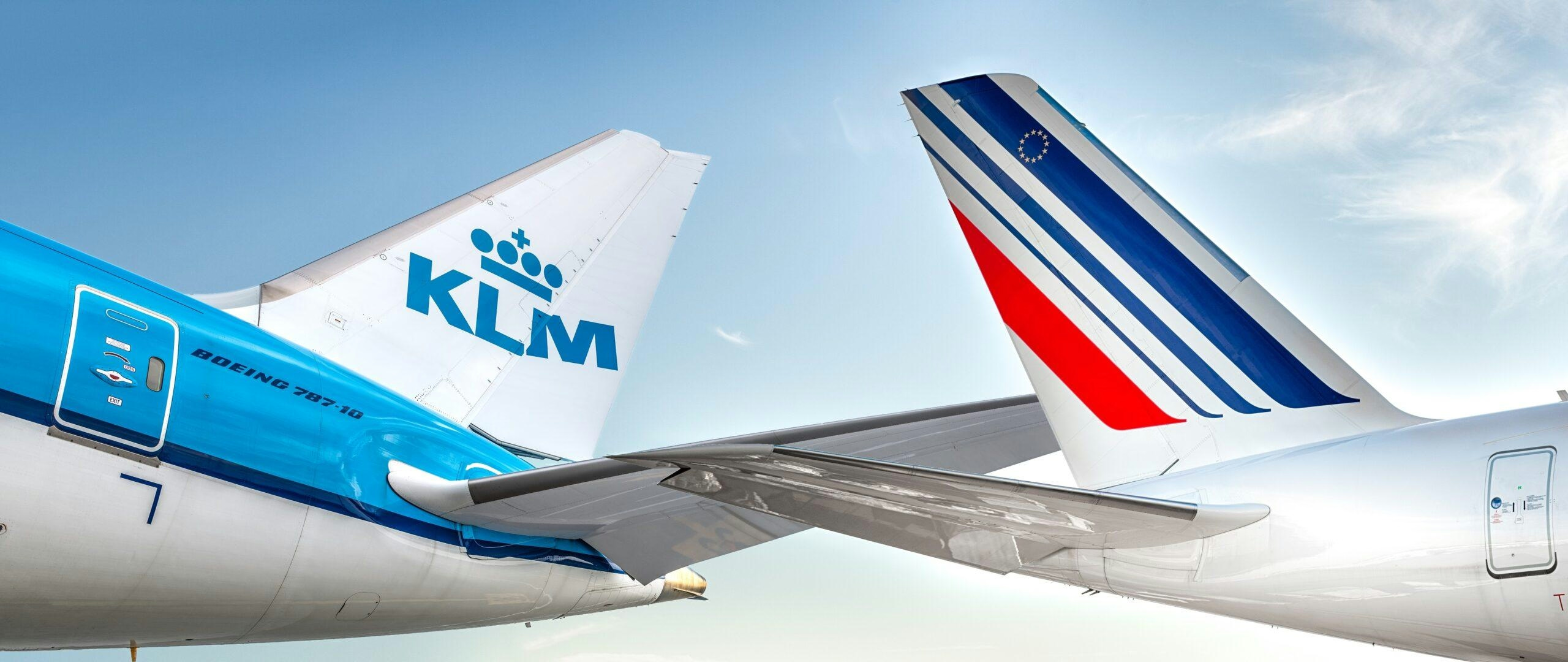
Air France-KLM cuts Airbus A350F freighter orders amid delays
Air France-KLM Reduces Airbus A350F Freighter Orders Amid Delays and Market Shifts
Air France-KLM Group has announced a reduction in its Airbus A350 freighter orders, scaling back its commitment from eight to six aircraft. This adjustment results from ongoing production delays and a strategic reassessment of the group’s cargo fleet. The revision reduces Martinair’s backlog by one A350F, leaving both Air France and Martinair with three A350Fs each, down from the initially planned four per carrier.
Strategic Reassessment in Response to Delays
The decision follows Airbus’s recent confirmation of delays in the A350F’s entry into service, prompting Air France-KLM to reevaluate its capital expenditure and operational priorities. The group indicated that the reduction aims to balance future investments with the need to maintain a flexible and efficient cargo operation. Despite the cutback, the A350Fs remain slated to replace Air France’s Boeing 777-200Fs and KLM/Martinair’s Boeing 747-400Fs eventually. To ensure continuity, current leases on existing freighters may be extended. At present, Air France-KLM Martinair Cargo operates a fleet comprising two Boeing 777Fs and four Boeing 747-400Fs.
Industry-Wide Repercussions and Market Context
This move aligns with a broader trend among airlines reassessing long-range aircraft commitments amid market uncertainties. Wizz Air recently reduced its Airbus A321XLR order, reflecting skepticism about the aircraft’s alignment with evolving business models. Similarly, Air Lease Corporation, the launch customer for the A350F, canceled all seven of its orders last month, citing delivery delays and heightened caution over large freighter investments amid uncertain tariff and trade conditions.
Industry analysts suggest that these developments may intensify competition, as rival carriers could leverage delays to negotiate more favorable terms with manufacturers or enhance their cargo capabilities. Air France-KLM’s order reduction may create opportunities for competitors to capture market share or reposition their fleets more aggressively.
Broader Strategic Implications for Air France-KLM
The group reaffirmed its commitment to a mixed cargo fleet strategy, combining dedicated freighters with bellyhold capacity on passenger flights. However, the order reduction, alongside recent strategic decisions—such as withdrawing from the Air Europa acquisition and focusing on premiumization—indicates a broader recalibration of Air France-KLM’s market approach. These shifts are likely to influence the group’s competitive positioning as it navigates a challenging environment characterized by shifting demand patterns, supply chain constraints, and evolving customer expectations.
As Air France-KLM adapts to these industry dynamics, its ability to balance operational requirements with strategic ambitions will remain under close scrutiny from investors and competitors alike.
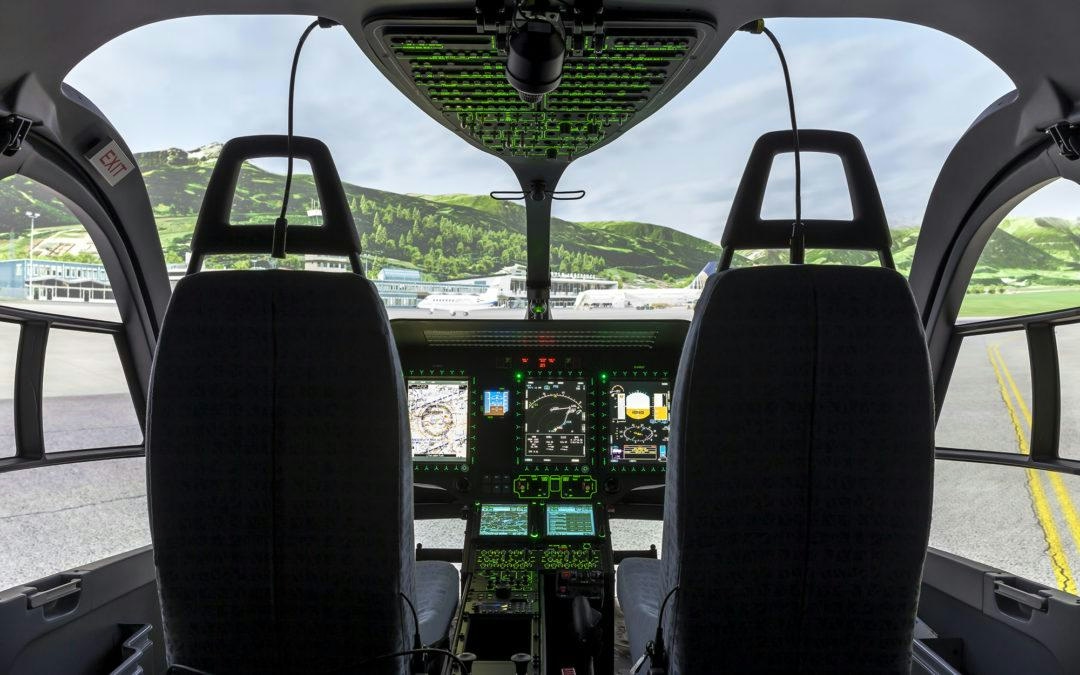
Reiser Simulation and Training Highlights Flight Safety Advances at Bavaria Research Airport
Reiser Simulation and Training Highlights Flight Safety Advances at Bavaria Research Airport
Advancing Aviation Safety Through Research Collaboration
Reiser Simulation and Training GmbH, a prominent German developer of advanced flight simulators, is playing a pivotal role in bridging the gap between academic research and industry innovation in aviation technology. The company is deeply engaged in several university-affiliated projects at the Aerospace Flight Test Center (AFTC) in Oberpfaffenhofen, demonstrating its commitment to enhancing flight safety and pilot training.
A central initiative for Reiser is Project EILT, conducted in partnership with Munich University of Applied Sciences. This project focuses on the calculation and visualization of air currents, a critical factor in executing complex helicopter landings on hospital rooftops and offshore platforms. The technology was recently showcased to State Secretary Tobias Gotthard, emphasizing its potential to improve real-time operational decision-making and safety in demanding flight environments.
The AFTC functions as a collaborative environment where university students, startups, and industry leaders converge to develop innovations in flight simulation, drone technology, and artificial intelligence applications in aviation. Reiser’s participation in Project EILT highlights its expertise in creating customized, mission-critical simulation solutions that address the evolving safety challenges faced by the aviation sector.
Market Dynamics and Industry Competition
Despite Reiser’s technological advancements, the company operates within a competitive landscape dominated by established firms such as FlightSafety International, which continues to report steady revenue growth and technological progress. While some industry stakeholders have welcomed Reiser’s innovative approach to flight safety training, others remain cautious about the cost-effectiveness of integrating new simulation technologies. This cautious reception reflects broader industry debates concerning the balance between innovation and operational efficiency.
In response to these developments, competitors are enhancing their own training programs, potentially intensifying competition within the aviation training market. As companies strive to establish new benchmarks in flight simulation and safety, the pace of technological advancement in the sector is expected to accelerate.
Strategic Positioning and Future Prospects
Headquartered in Berg, Germany, Reiser Simulation and Training specializes in high-end simulation systems for both civil and military aviation. Its product portfolio includes full-flight simulators, flight training devices, and bespoke training environments compliant with EASA and ICAO standards. The company’s ongoing collaborations with universities and research institutions represent a strategic investment in nurturing the next generation of aviation professionals.
As the aviation industry continues to evolve, Reiser’s integration of cutting-edge research with practical training solutions positions it as a significant contributor to the future of flight safety, navigating both the opportunities and challenges presented by a rapidly changing market.
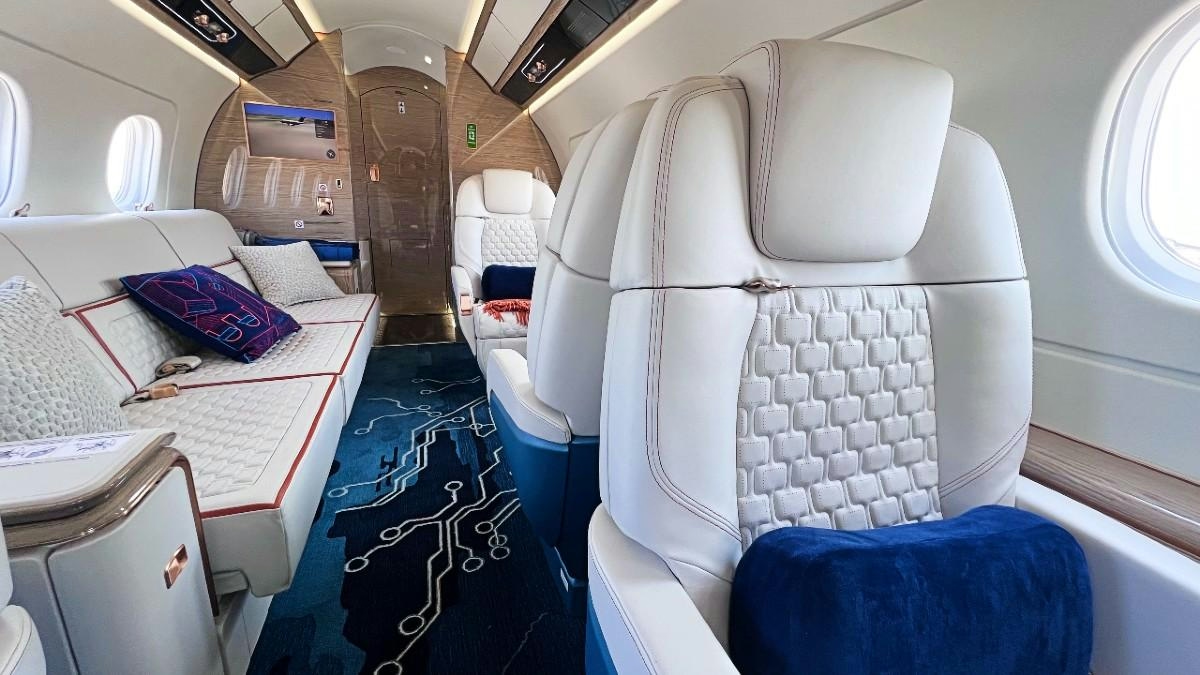
Embraer Adds Starlink as Aftermarket Option for Praetor Jets
Embraer Integrates Starlink as Aftermarket Connectivity Option for Praetor Jets
Embraer has announced the introduction of Starlink satellite internet as an aftermarket connectivity solution for its Praetor 600, Praetor 500, Legacy 500, and Legacy 450 business jets. This upgrade will be made available through a Supplemental Type Certificate (STC) developed in collaboration with Nextant Aerospace, the engineering division of Flexjet.
Certification and Deployment Timeline
The Federal Aviation Administration (FAA) has already approved the installation of Starlink for the Praetor 500 and Legacy 450 fleets. Certification for the Praetor 600 and Legacy 500 models is anticipated by the third quarter of 2025. Subsequent regulatory approvals are expected from Brazil’s National Civil Aviation Agency (ANAC) in the fourth quarter of 2025 and from the European Union Aviation Safety Agency (EASA) in early 2026.
Starlink, operated by SpaceX, provides high-speed, low-latency internet connectivity through a constellation of Low Earth Orbit (LEO) satellites. This technology enables reliable internet access even in remote regions and over oceans, with latency below 99 milliseconds. Such performance supports bandwidth-intensive applications including 4K video conferencing, online gaming, virtual private network (VPN) access, and other real-time activities for passengers onboard.
Industry Perspectives and Strategic Partnerships
Marsha Woelber, Vice President of Customer Support and Aftermarket Sales for Embraer Executive Jets, emphasized the significance of this development, stating, “We’re excited to bring Starlink’s cutting-edge, high-speed internet to our customers. This builds on our ongoing efforts, strengthening our commitment to seamless, connected flight experiences around the world.”
Jay Heublein, president of Flexjet’s Technical Services division, highlighted Starlink’s established presence in business aviation, noting, “With more than a year of operational experience and hundreds of kits sold to the business aviation fleet, Starlink has firmly established itself as the preeminent solution for in-flight connectivity. The Praetor is one of the most technologically advanced business jets in its category, and the addition of Starlink ensures that passengers will have a seamless connectivity experience.”
Flexjet, the largest operator of Praetor jets globally, plans to equip its entire Praetor fleet with Starlink. Both Embraer and Flexjet are also collaborating on a Starlink STC for the Phenom 300 jets, targeting availability in the fourth quarter of 2025.
Market Implications and Technical Challenges
The integration of Starlink comes amid growing demand for advanced in-flight connectivity among business travelers. Industry analysts predict that this enhancement will increase interest in Embraer’s jets, potentially prompting competitors such as Gulfstream and Bombardier to accelerate improvements to their own connectivity offerings. However, the integration process presents technical challenges, as Embraer must ensure that the Starlink system does not adversely affect aircraft performance or reliability. Additionally, concerns regarding the security of Starlink technology—highlighted by recent research from China—may invite further regulatory scrutiny and influence customer perceptions.
Expansion of Embraer’s Service Network in Latin America
In a related development, Embraer has expanded its Authorized Service Center Network in Latin America by partnering with Aerocardal, based at Arturo Merino Benítez International Airport in Santiago, Chile. Aerocardal, which has been active in executive aviation since 1991, will provide line maintenance, unscheduled maintenance, Aircraft on Ground (AOG) support, and drop-in services for both local and international clients. Frank Stevens, Vice President of MRO Services at Embraer Services & Support, remarked, “We are pleased to now partner with Aerocardal in Chile. They are based in a strategic hub and have provided excellent service to their customers over the last decades.”
Embraer currently operates nine owned service centers dedicated to executive aviation and continues to expand its global maintenance, repair, and overhaul (MRO) footprint.
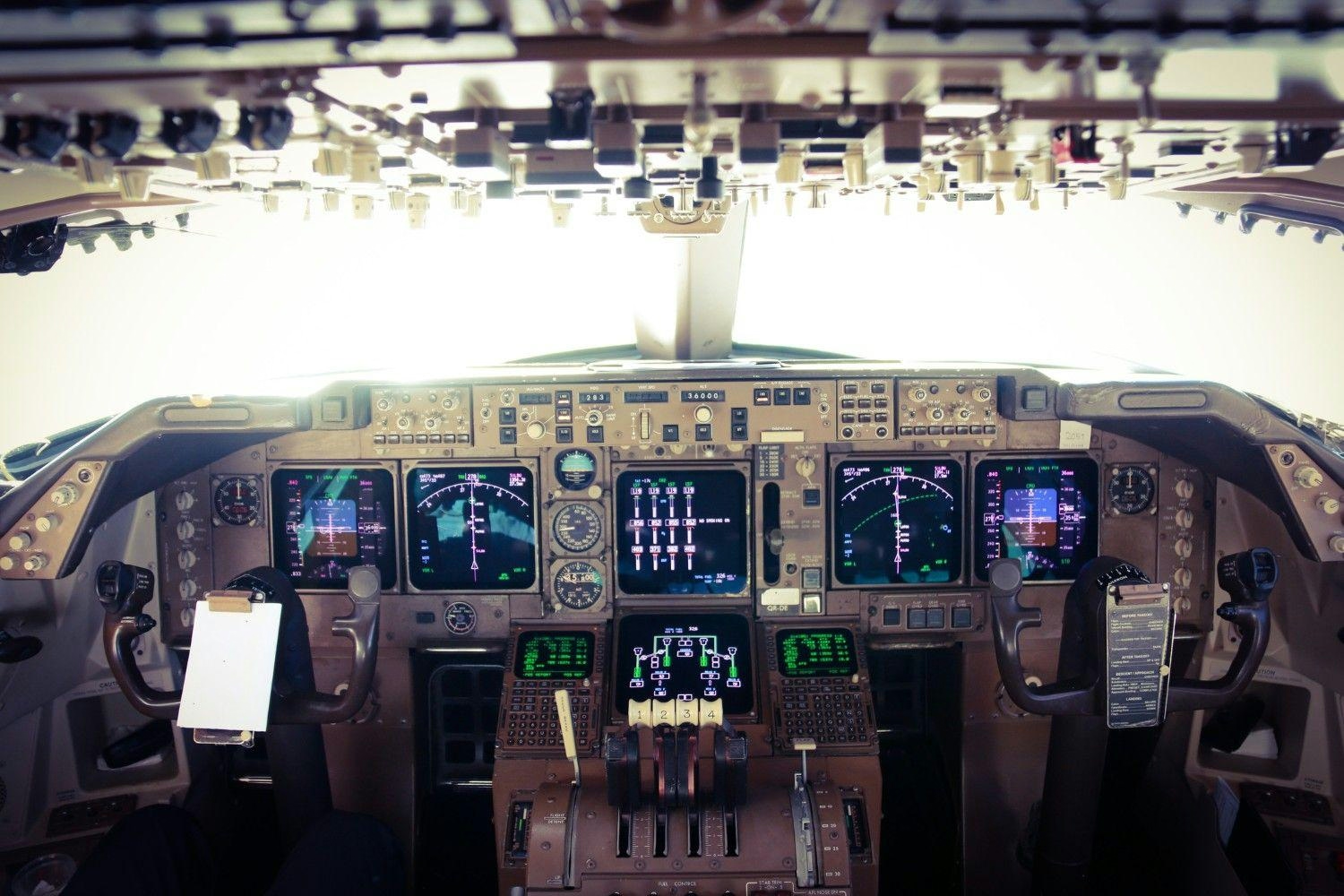
Air India Engine Shutdown: Pilots’ Body Explains FADEC Fuel Cut-Off Theory
Air India Engine Shutdown: Pilots’ Body Highlights FADEC Fuel Cut-Off Theory
Emerging Theories on Engine Failure
The Aircraft Accident Investigation Bureau (AAIB) has suggested that a possible fuel switch error may have caused the catastrophic engine failure on Air India Flight 171. However, new perspectives are focusing on the aircraft’s advanced electronic systems, particularly the Full Authority Digital Engine Control (FADEC), as a potential factor in the incident. Preliminary reports indicate that the crash was initiated by the sudden movement of fuel-control switches to the "cut-off" position, which resulted in both engines being starved of fuel. Cockpit voice recordings reveal that the captain may have cut the fuel flow while the first officer was at the controls. Despite these findings, the Federation of Indian Pilots (FIP) has urged caution against attributing blame to the crew based on early assumptions, emphasizing the need to consider all possible technical causes.
The Role of FADEC and Related Systems
At the heart of the latest theory is the FADEC system, often described as the "brain" of modern aircraft such as the Boeing 787. FADEC is responsible for monitoring and managing critical engine functions, including fuel flow and engine speed, and it has the capability to override pilot commands based on sensor inputs. This system operates in conjunction with the Electronic Engine Controller (EEC) and the Thrust Control Malfunction Accommodation (TCMA) systems. The FIP has raised concerns that a malfunction within these interconnected systems—potentially triggered by faulty sensor data—could have caused FADEC to shut down both engines without any manual input from the crew. This possibility challenges the initial narrative by suggesting that the engine failure may have led to an automatic movement of the fuel switches to the cut-off position, rather than a manual error by the pilots.
Expert Insights and Calls for Thorough Investigation
Aviation attorney Mary Schiavo, speaking to FinancialExpress.com, underscored concerns regarding the TCMA system, which informs FADEC whether the aircraft is on the ground or airborne. She referenced previous incidents, including a 2019 All Nippon Airways (ANA) Boeing 787 flight where FADEC triggered a dual engine shutdown due to erroneous sensor input. Schiavo also mentioned an ongoing investigation into a 2025 United Airlines 787 incident involving uncommanded dives, believed to be linked to software or computer malfunctions. In light of these concerns, the FIP has called for a comprehensive reassessment of the roles played by FADEC, EEC, and TCMA malfunctions in the Air India crash. The pilots’ association is urging investigators to meticulously analyze data from the Flight Data Recorder (FDR), Cockpit Voice Recorder (CVR), and relevant Boeing service bulletins before reaching any conclusions.
In response to the preliminary findings, India’s aviation regulator has mandated inspections of Boeing fuel switches across airline fleets. Meanwhile, families of the victims continue to seek detailed answers as the investigation unfolds. The FIP stresses the importance of a thorough and impartial inquiry, cautioning against premature judgments regarding crew actions until all technical possibilities have been fully examined.
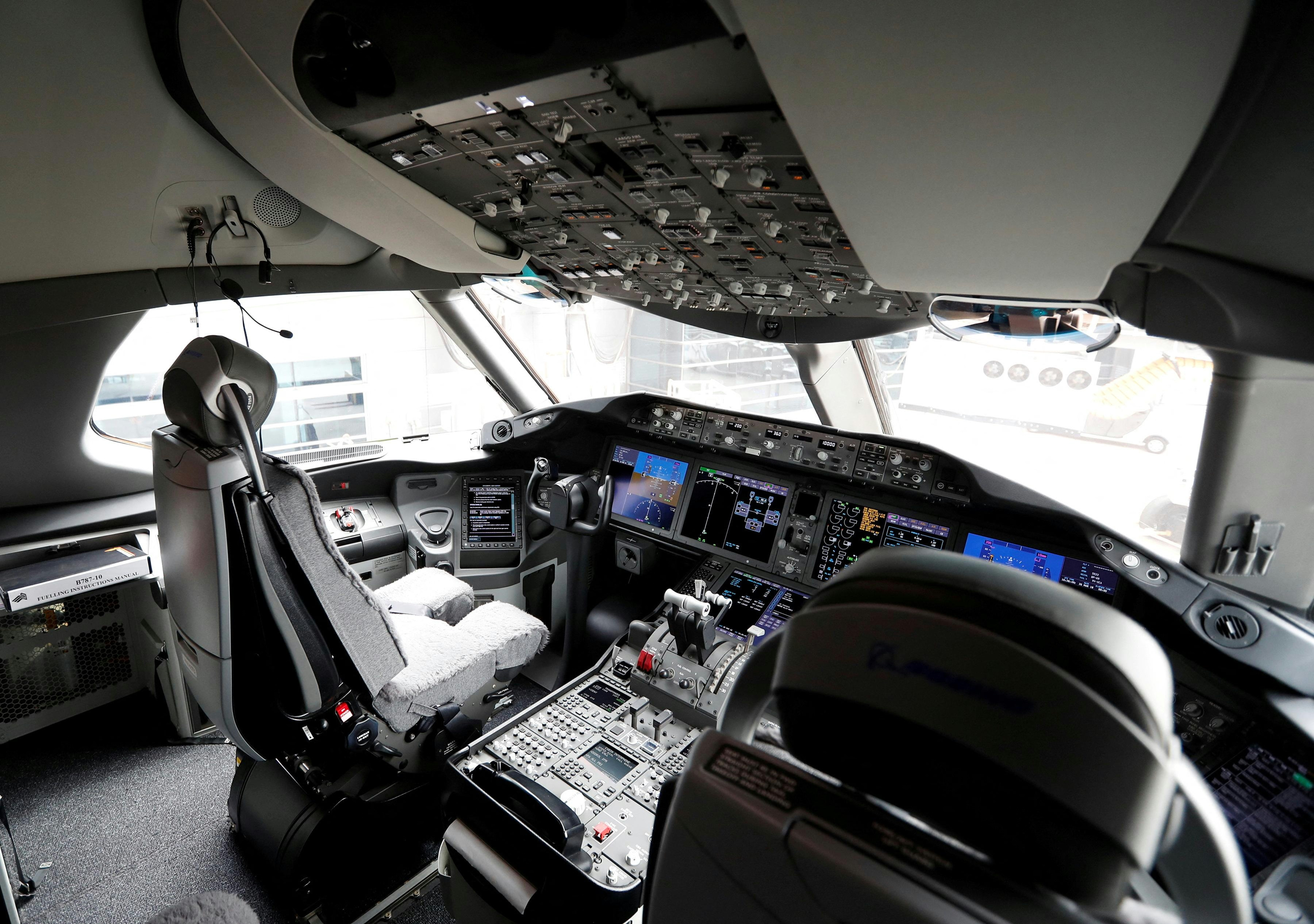
US Expert: Boeing 787 Experienced Fuel Switch Cut-Off in 2019; Japanese Pilots Did Not Intervene
US Expert Highlights Fuel Switch Cut-Off in 2019 Boeing 787 Incident; Japanese Pilots Did Not Intervene
A preliminary investigation into the Air India AI 171 crash in Ahmedabad has renewed focus on the Boeing 787’s fuel switch system. India’s Aircraft Accident Investigation Bureau (AAIB) reported that the fuel switch had shifted from the “Run” to the “Cutoff” position prior to the crash. The 15-page report, released this week, included a paraphrased exchange between Captain Sumeet Sabharwal and First Officer Clive Kunder, in which one pilot questioned the other about cutting off the fuel supply. Both pilots denied any deliberate action to do so. Shortly thereafter, a Mayday call was issued, and the aircraft crashed into a hostel for medical students, resulting in the deaths of all on board.
The AAIB report does not clarify how or why the fuel switch moved to the “Cutoff” position, leaving open the possibility of either pilot error or mechanical malfunction. To provide further insight, FinancialExpress.com consulted Mary Schiavo, a US aviation expert, who dismissed theories of intentional pilot intervention. Schiavo emphasized the absence of evidence supporting deliberate action and called for the full release of cockpit voice recorder (CVR) transcripts to avoid misinterpretation. She stated, “There is nothing here to suggest pilot suicide or murder.”
Parallels with 2019 ANA Boeing 787 Incident
Schiavo also referenced a similar event in 2019 involving an All Nippon Airways (ANA) Boeing 787. During final approach from Tokyo to Osaka, both engines failed after the aircraft’s software erroneously detected that it was on the ground. This triggered the Thrust Control Malfunction Accommodation System, which cut fuel to the engines. According to Schiavo, the pilots did not engage the fuel cutoff switches. The malfunction was ultimately traced to a software glitch rather than human error. The ANA flight, carrying 109 passengers and 9 crew members, landed safely without injuries.
Regulatory Response and Ongoing Investigations
The Air India crash has intensified scrutiny of Boeing’s fuel switch mechanisms. India’s civil aviation authority has ordered inspections of cockpit fuel switches on Boeing aircraft following the AAIB’s findings. Meanwhile, the US Federal Aviation Administration (FAA) and Boeing have maintained that the fuel switch locks are safe. However, investigations continue to explore whether the Ahmedabad crash resulted from pilot action or a technical fault.
Regulatory bodies worldwide are responding to these concerns. The UK Civil Aviation Authority (CAA) issued a warning just weeks before the crash, highlighting potential issues with fuel shutoff valves on several Boeing models, including the 737, 757, 767, 777, and 787. The fuel control switches, housed within the Throttle Control Module (TCM), had been replaced on the ill-fated AI 171 aircraft in both 2019 and 2023. Despite these replacements, questions remain regarding the reliability of the locking mechanism.
The heightened regulatory scrutiny and ongoing investigations have placed significant pressure on Boeing, with potential repercussions for its market position and investor confidence. As authorities continue to determine the root cause of the AI 171 crash, the aviation industry is preparing for possible safety reviews and further regulatory measures.
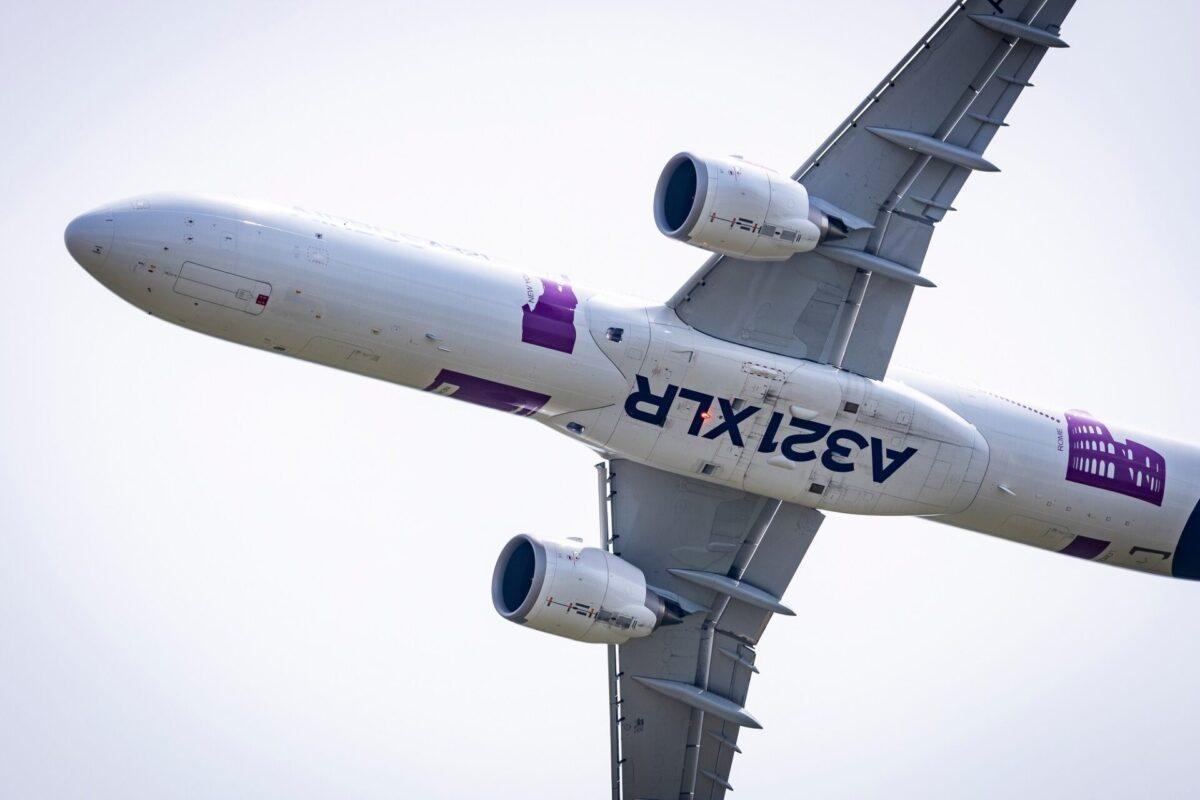
IndiGo A321XLR Delivery Timeline and Potential New Routes
IndiGo’s A321XLR Delivery Timeline and Expansion Strategy
India’s largest low-cost carrier, IndiGo Airlines, is preparing to receive its first Airbus A321XLR aircraft, now anticipated in December 2025. This new addition to the fleet is expected to significantly extend the airline’s international reach, enabling direct flights on longer routes that were previously inaccessible with its narrow-body aircraft. However, industry-wide production and supply chain disruptions pose risks to the delivery schedule, potentially affecting IndiGo’s ambitious global expansion plans.
The A321XLR, boasting a range of approximately 8,700 kilometers, will allow IndiGo to operate nonstop flights from major Indian hubs such as Delhi, Mumbai, and Hyderabad to destinations including Seoul, Athens, and Nairobi. These routes are central to the airline’s growth strategy through 2030, as it currently operates over 2,200 daily flights to more than 140 destinations across Asia, Europe, and Africa. IndiGo has placed an order for 69 A321XLRs, aiming to strengthen its presence in Europe, Northeast Asia, and East Africa.
CEO Pieter Elbers has described the A321XLR as a critical link between the airline’s existing A321neo fleet and its forthcoming long-haul Airbus A350 services, scheduled to commence in 2027. The extended range of the XLR model, which adds up to two hours of additional flying time, will open new markets such as Denpasar, Athens, and Nairobi, while reinforcing IndiGo’s foothold in established international sectors.
Challenges and Competitive Landscape
Despite these promising developments, IndiGo faces significant challenges. Delays in aircraft production and supply chains threaten to slow the introduction of the A321XLR, potentially postponing the launch of new long-haul routes and the planned rollout of business class services. These uncertainties have elicited mixed responses from investors, with some expressing concern over the impact on the airline’s expansion timeline, while others remain confident in IndiGo’s long-term growth prospects.
Competition is intensifying, notably from carriers such as Aegean Airlines, which is reportedly considering India for its initial A321LR routes. This emerging rivalry could affect key markets that IndiGo is targeting with its expanded fleet.
In response, IndiGo is advancing a multi-hub strategy designed to optimize fleet utilization and operational efficiency. Mumbai is positioned as the gateway to West Asia, Delhi will focus on Central Asia, and Hyderabad will support niche domestic and regional routes. This approach is intended to sustain and enhance the airline’s long-haul services.
To further strengthen its international network, IndiGo has established partnerships with major global airlines including Delta, Air France-KLM, Virgin Atlantic, and Japan Airlines. These alliances, facilitated through codeshare agreements, will extend IndiGo’s connectivity to over 30 cities across Europe and North America. Additionally, the airline has increased its order for wide-body Airbus A350s and plans to introduce Boeing 787 aircraft, diversifying its fleet and enabling direct service to high-demand long-haul destinations.
Leveraging India’s strategic geographic location—where 65% of the world’s population is within a five to six-hour flight—IndiGo aims to reduce dependence on foreign hubs and develop a self-reliant medium- and long-haul network. While supply chain delays present tangible obstacles, the airline remains focused on transforming its international connectivity and establishing itself as a globally competitive carrier.
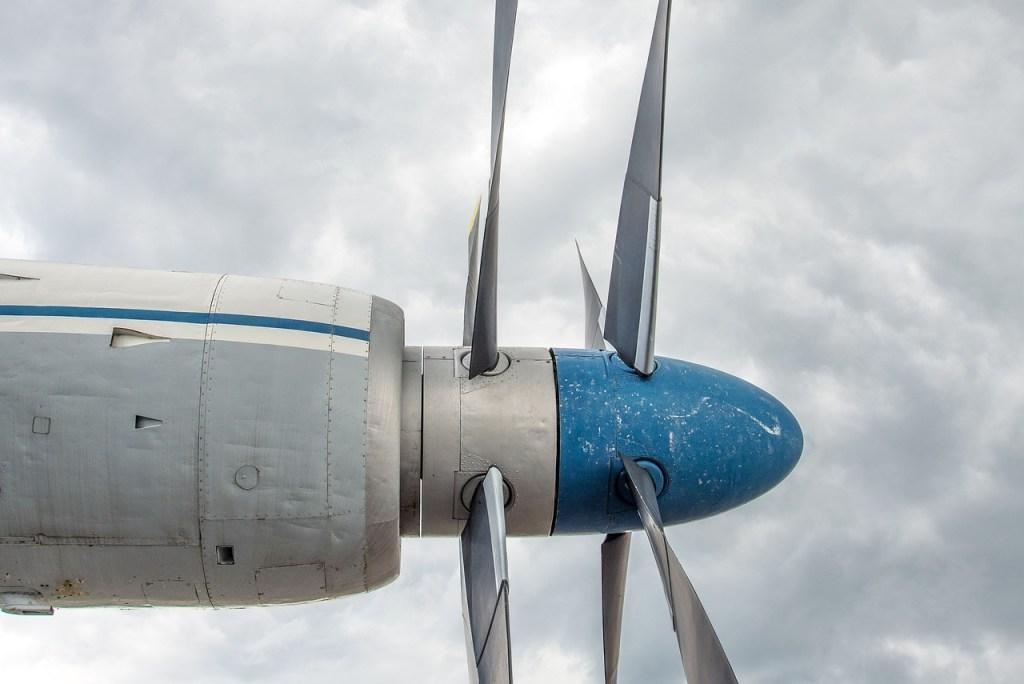
Airlines Confront Rising Costs, Supply Issues, and Slowing Demand
Airlines Face Rising Costs, Supply Chain Disruptions, and Softening Demand in 2025
As 2025 progresses, the global airline industry is confronting a multifaceted set of challenges, including escalating operational costs, persistent supply chain disruptions, and weakening demand, particularly in North America. These difficulties are unfolding against a backdrop of ongoing economic instability and heightened geopolitical tensions, notably the introduction of new tariffs by the U.S. government. In response to this uncertain environment, many U.S. carriers have opted to scale back or withhold their annual financial forecasts.
Industry Outlook and Key Challenges
A recent report by Skift Research, *Turbulence and Tailwinds: Shifting Trends in the Airline Industry*, revisits themes from its Global Travel Outlook 2025, highlighting how the sector’s trajectory is being reshaped by several converging factors. Supply chain issues remain a critical concern, with disruptions expected to intensify as airlines contend with the effects of tariffs and logistical bottlenecks. The Association of Asia Pacific Airlines (AAPA) has called on governments and suppliers to take urgent action, warning that ongoing supply constraints threaten the industry’s sustainability goals and long-term growth prospects.
Despite these headwinds, the International Air Transport Association (IATA) projects that 2025 will still be a strong year for airlines worldwide, with passenger revenues reaching record highs and profit margins improving. However, revenue growth is anticipated to slow compared to earlier forecasts, constrained by supply chain challenges, rising tariffs, and geopolitical uncertainties. Notably, demand for premium travel has demonstrated remarkable resilience, providing a crucial support to profitability amid broader market softness.
Economic uncertainties and the fragile financial health of some carriers are also expected to accelerate consolidation within the industry. Airlines are increasingly seeking to strengthen their market positions and enhance resilience in the face of ongoing volatility.
Regional Performance and Future Prospects
Regionally, North America is forecasted by IATA to generate the highest absolute profits in 2025, while the Asia-Pacific region is expected to experience the most significant demand growth. Although the aviation sector is poised to withstand some of the global economic pressures, growth will remain uneven and heavily dependent on the resolution of supply chain disruptions and the evolving geopolitical landscape.
Industry leaders and associations continue to emphasize the need for coordinated efforts to alleviate supply chain constraints and support the sector’s recovery and sustainability objectives. The coming months will be pivotal in determining whether airlines can sustain their momentum amid mounting operational and economic pressures.
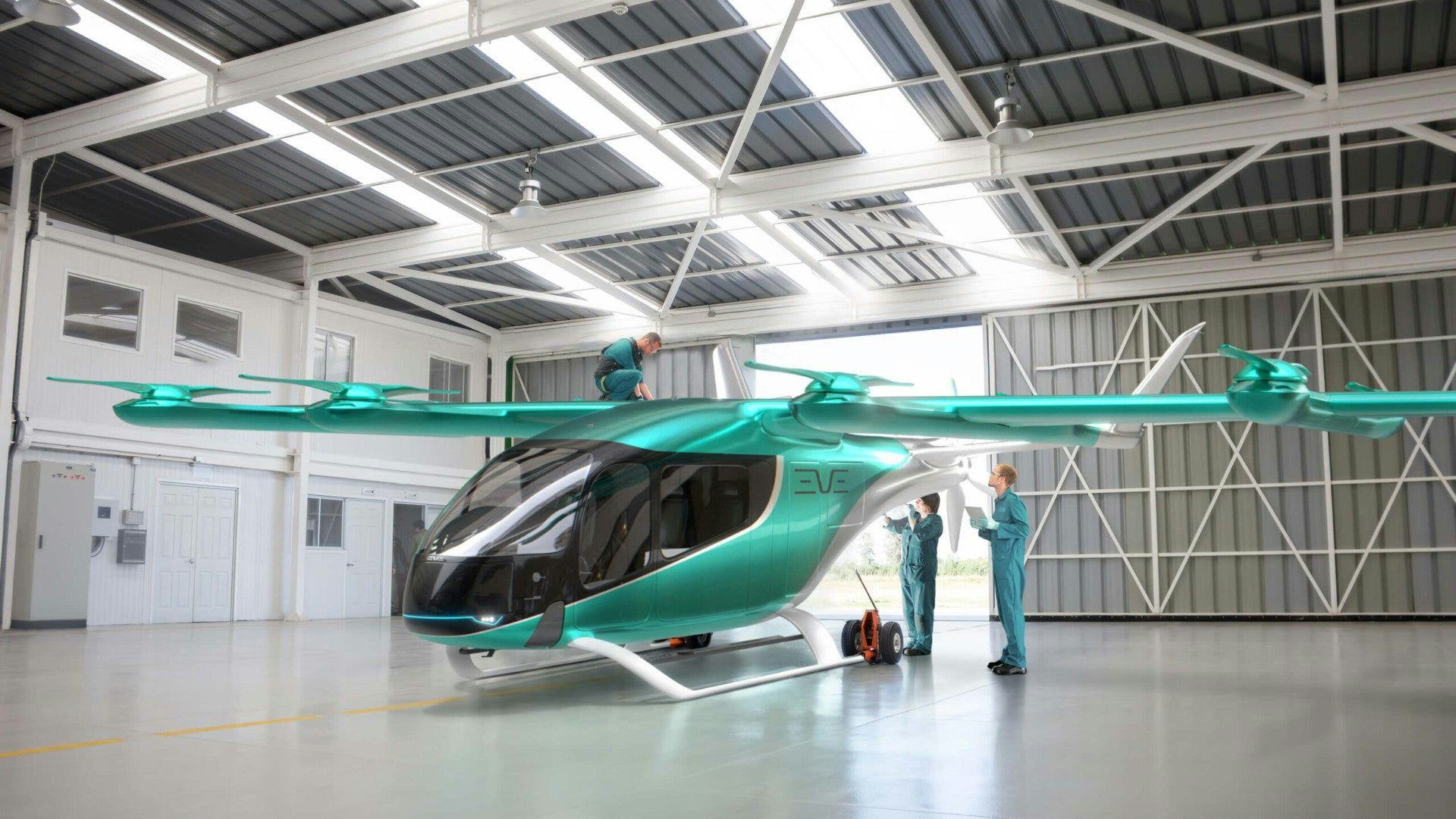
Eve to Test Beta’s Electric Motors Amid US Air Taxi Industry Deals
Eve to Test Beta Technologies’ Electric Motors Amid Intensifying US Air Taxi Competition
The US air taxi industry is witnessing a surge in strategic developments as leading companies vie for dominance in the burgeoning advanced air mobility sector. Eve Air Mobility, majority-owned by Brazilian aerospace giant Embraer, announced plans to test electric motors supplied by Beta Technologies on its electric vertical take-off and landing (eVTOL) prototype. This move reflects Eve’s efforts to optimize aircraft performance while addressing mounting financial pressures.
Evaluating Alternative Propulsion Systems
Previously, Eve had designated Nidec Aerospace as its primary supplier of electric propulsion systems for its in-development air taxi. However, on August 6, the company revealed an agreement with Beta Technologies to evaluate their electric motors on the prototype. Eve’s CEO Johann Bordais emphasized that Nidec remains fully committed to the project, but highlighted Beta’s strong relationship with the Federal Aviation Administration (FAA) and its innovative “start-up mindset” as influential factors in the decision. Bordais stated, “We’re looking for the most optimal design when it comes to safety, performance, reliability, and cost effectiveness.”
This strategic testing comes amid escalating financial challenges for Eve, which reported a 77% increase in net losses during the second quarter. The company is preparing for the first flight of its full-scale engineering prototype, now anticipated in December, according to Embraer CEO Francisco Gomes Neto. Bordais noted that the prototype is currently undergoing final ground tests ahead of its flight campaign.
Beta Technologies’ Role and Industry Context
Based in Vermont, Beta Technologies is recognized as a leading developer of electric aircraft. Its flagship model, the Alia CX300, features a conventional fixed-wing design with a pusher propeller, and the company plans to develop an eVTOL variant in the future. Beta distinguishes itself by designing and manufacturing key aircraft systems—including electric propulsion units, flight controls, and charging infrastructure—in-house. Since 2021, Beta has accumulated tens of thousands of hours testing its electric propulsion systems, including nearly 500 hours of flight testing. The company’s certification strategy involves certifying its electric pusher motor as a standalone technology, which will support the certification of both its Alia CTOL and VTOL aircraft.
Eve’s vice president of engineering and technology, Luiz Valentini, explained that the electric motors from Nidec and Beta differ in size, cooling systems, and integration methods. He noted, “There are some differences in the way the Beta motor integrates into the vehicle, how it communicates, and how some of the protections are made.” These distinctions necessitate further testing to determine the most suitable propulsion system for Eve’s aircraft.
Competitive Dynamics in the US Air Taxi Market
Eve’s announcement coincides with significant moves by its competitors. Joby Aviation recently agreed to acquire Blade Air Mobility’s passenger-travel brokerage and marketing business for up to $125 million, expanding its presence in the urban air taxi market. Meanwhile, California-based Archer Aviation has strengthened its defense sector capabilities by acquiring patents, personnel, and a composite fabrication facility from Overair.
Beyond the air taxi sector, broader market shifts are underway. Uber has invested in electric vehicle manufacturer Lucid and formed a partnership with autonomous delivery company Nuro, signaling potential cross-industry influences on the future of advanced air mobility.
As Eve advances toward its prototype’s maiden flight and explores alternative propulsion technologies, it faces the dual challenges of technological innovation and an increasingly competitive landscape.

International Airlines Group Selects DAITY for Accelerator Program
International Airlines Group Selects DAITY for Flagship Innovation Accelerator
DAITY Joins IAG’s Largest Cohort to Date
Toronto-based artificial intelligence innovator DAITY has been selected to participate in the 2025 IAGi Accelerator, the flagship innovation program of International Airlines Group (IAG). This year’s cohort is the largest in the program’s history, comprising 29 startups that will collaborate with IAG and its leading airlines to pilot AI-driven solutions aimed at enhancing aviation risk management. DAITY’s inclusion highlights IAG’s strategic emphasis on harnessing cutting-edge technology, particularly artificial intelligence and sustainable aviation fuel, to drive innovation across its operations.
The IAGi Accelerator is structured around two distinct tracks: ‘Discover,’ which targets early-stage startups, and ‘Deploy,’ designed for more mature solutions. This dual-track approach reflects IAG’s comprehensive strategy to integrate emerging technologies throughout the organization, fostering innovation at multiple levels.
DAITY’s AI Platform and Its Role in Aviation Risk Management
DAITY was selected for its unique capability to unify fragmented data from a variety of internal and external sources, offering a consolidated and actionable view of critical risk factors. Its AI-powered analytics accelerate the generation of insights, enabling rapid and informed decision-making in response to emerging risks and opportunities. The platform’s seamless integration with existing enterprise workflows ensures that teams can adopt the technology without disrupting established processes.
Sanjay Lashand, Founder of DAITY, emphasized the company’s commitment to simplicity, security, and impact in enterprise AI. He noted that being chosen by IAG, a recognized leader in aviation innovation, validates DAITY’s vision and the tangible value it delivers. The platform is designed for rapid deployment, often within days, and is adaptable to the complex needs of large multinational organizations such as IAG. By transforming siloed and complex data into actionable intelligence, DAITY supports responsible innovation at scale.
Collaboration Focus and IAG’s Innovation Strategy
Participation in the IAGi Accelerator will enable DAITY to demonstrate how advanced AI can address some of the most pressing challenges in aviation. The collaboration will concentrate on risk management issues, including forced labor and modern slavery, while also advancing operational efficiency, sustainability, and supply chain transparency.
IAG’s commitment to innovation is underscored by its recent strong financial performance, with operating profit and revenue growth surpassing market expectations. Although competitors and the broader market have yet to respond publicly to the latest accelerator cohort, IAG’s proactive engagement with emerging technologies signals its determination to maintain a leadership position in the aviation sector.
About DAITY
DAITY offers a next-generation AI platform designed to prioritize privacy, speed, and ease of use. The company empowers organizations to leverage advanced analytics, automate research processes, and mitigate risk, thereby enabling responsible innovation for some of the world’s most demanding enterprises.
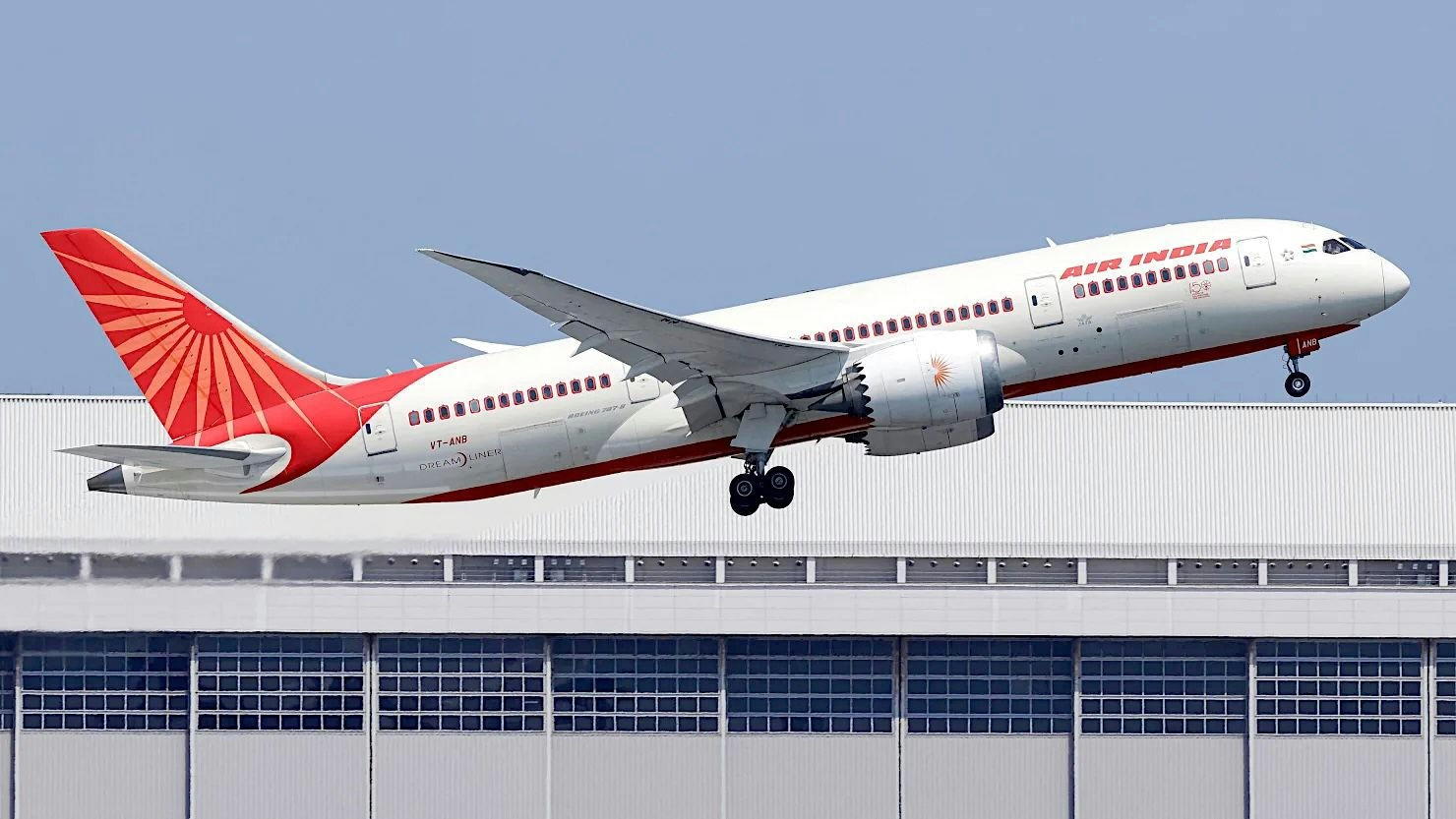
Aviation Expert: Boeing Dreamliner Software Reduced Fuel Use Twice Without Pilot Input
Aviation Expert Highlights Boeing Dreamliner Software’s Role in Fuel Cut Incidents
Aviation attorney and former US Department of Transportation Inspector General Mary Schiavo has cautioned against hastily attributing blame to pilots in the aftermath of the recent Air India crash. She underscored the significance of Boeing Dreamliner’s automated systems, which have been implicated in previous incidents involving unexpected fuel reductions without pilot intervention. Schiavo emphasized that the Boeing 787’s software is capable of independently cutting fuel to its engines, a factor that demands thorough investigation before fault is assigned.
Speaking to journalist Barkha Dutt, Schiavo noted that pilots are often blamed in approximately 75% of aviation incidents, yet many such accusations have been disproven. She described this tendency as not only unfair but overly simplistic and potentially harmful. “There are too many suspicious things to say, ‘Oh, it’s the pilots,’” she remarked, referencing earlier cases involving the same aircraft model where onboard systems autonomously reduced or cut fuel flow mid-flight.
Past Incidents and the TCMA System
Schiavo specifically cited a 2019 incident involving an All Nippon Airways (ANA) Boeing 787, where the aircraft’s system erroneously shut off fuel mid-air after mistakenly detecting that the plane had already landed. The software in question, known as the Thrust Control Malfunction Accommodation (TCMA) system, has been previously implicated in similar malfunctions. Designed to help the aircraft distinguish between flight and ground conditions, the TCMA can command the engines to reduce or cut power under certain circumstances. In the ANA case, the system’s premature fuel cutoff forced the plane to glide heavily to the runway. Fortunately, the incident occurred during landing rather than takeoff, preventing a crash.
Schiavo also referenced a more recent United Airlines Dreamliner flight from Washington, D.C., to Nigeria, where the aircraft reportedly entered a nose dive due to thrust and engine issues, again raising concerns about the behavior of automated systems.
Implications for Boeing and the Aviation Industry
The TCMA system, mandated by the US Federal Aviation Administration (FAA), lies at the heart of these concerns. Schiavo warned that errors by such automated protocols can have dire consequences, particularly during critical phases like takeoff when pilots have only seconds to react. These revelations come amid heightened scrutiny of Boeing, which is already grappling with a series of safety and production challenges.
The Air India crash has intensified regulatory and public attention, prompting increased inspections of Boeing 787 aircraft operated by Air India and causing flight delays and cancellations. The incident has also sparked broader questions regarding cockpit confusion, fuel management, and the reliability of automated systems, all of which are influencing perceptions of the Dreamliner’s safety.
Meanwhile, Boeing’s competitors are leveraging the situation to highlight their own advancements in software and integrated control technologies, positioning safety features as a key competitive advantage. As Boeing seeks to restore confidence in its flagship aircraft, experts like Schiavo stress the necessity of a comprehensive investigation that carefully weighs both human and technological factors before drawing conclusions.
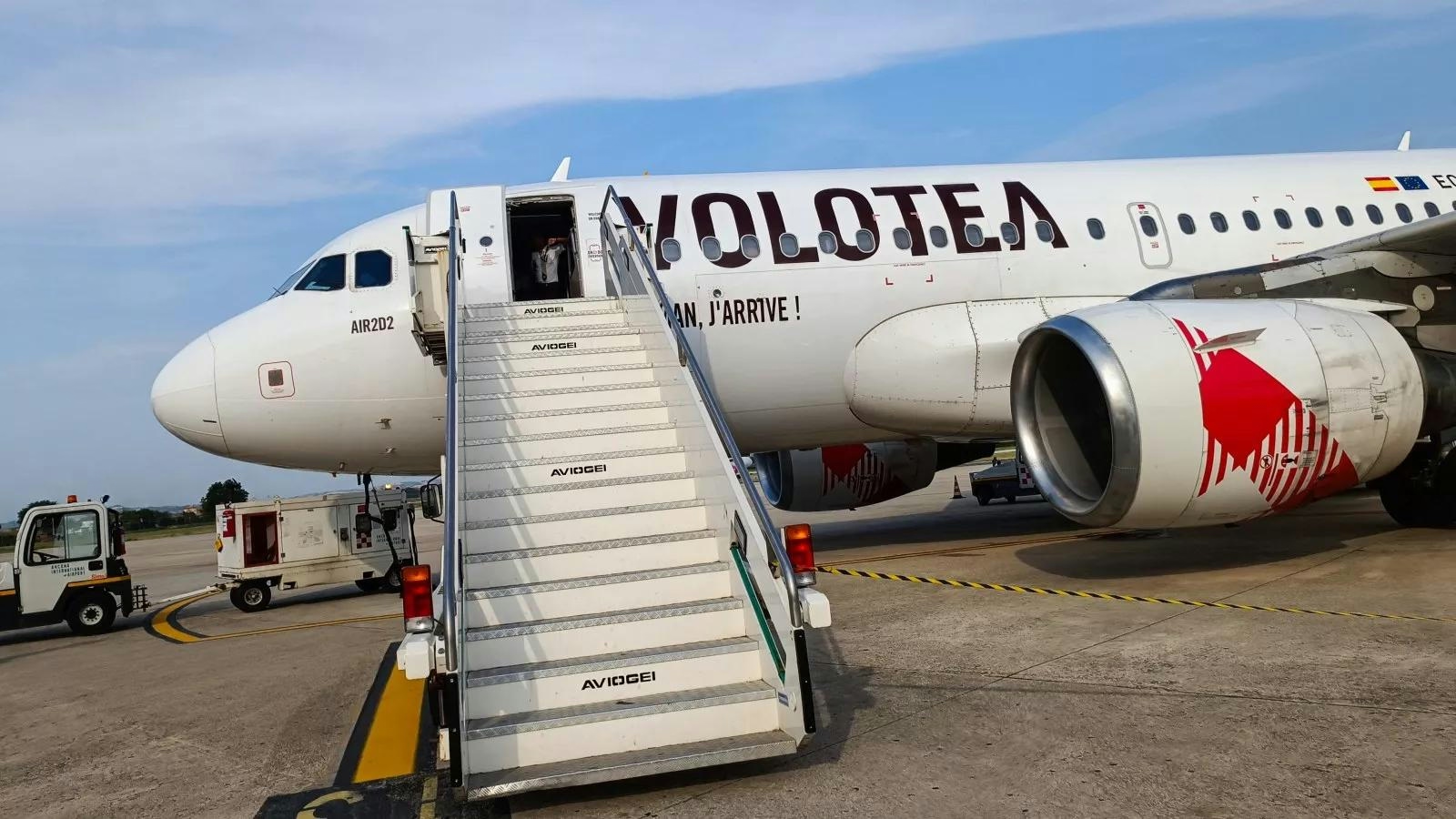
Investigation Launched into Fatal Injury Caused by Volotea A319 Engine at Milan Bergamo Airport
Investigation Launched into Fatal Injury Caused by Volotea A319 Engine at Milan Bergamo Airport
A tragic accident at Milan Bergamo Airport has resulted in the death of a ground worker after being struck by the engine of a Volotea Airbus A319 during taxiing operations. The incident occurred as the aircraft was maneuvering along a taxiway in preparation for departure. Italian authorities have initiated a formal investigation to establish the exact circumstances surrounding the fatality.
Details of the Incident
The accident took place at Milan Bergamo Airport, a key hub for low-cost carriers in northern Italy. The Volotea Airbus A319 involved, a narrow-body aircraft typically deployed on short- and medium-haul routes, was not carrying passengers at the time of the incident. Preliminary reports indicate that the victim, whose identity has not been disclosed, was working in close proximity to the aircraft’s engine when the accident occurred. The flight crew onboard the aircraft were unharmed.
Investigators are currently examining whether the engine was operating at high thrust during the incident and if all standard safety protocols were properly observed. The precise sequence of events remains under review as authorities gather further evidence.
Investigation and Regulatory Response
Italy’s Civil Aviation Authority (ENAC) has launched a comprehensive inquiry focusing on airport safety procedures and the aircraft’s taxiing operations. The investigation seeks full cooperation from Volotea, airport management, and ground personnel to clarify the factors that contributed to the fatal accident.
The inquiry will evaluate whether established safety measures were adhered to and if any technical or procedural lapses played a role. The findings are anticipated to influence future safety protocols and may have wider implications for ground operations across Italian airports.
Airport and Airline Statements
Both Milan Bergamo Airport and Volotea have expressed their condolences to the family of the deceased and have pledged full cooperation with the ongoing investigation. Airport officials confirmed that the accident occurred during routine taxiing and noted that overall airport operations were not significantly disrupted. They also emphasized their commitment to reviewing and enhancing safety protocols to prevent similar incidents in the future.
A spokesperson for Volotea stated, “We are deeply saddened by this tragedy and are fully cooperating with the authorities to understand the cause of this incident. Our thoughts are with the family of the individual involved, and we are committed to supporting the investigation process in any way possible.”
Broader Implications for Volotea and the Industry
This incident places Volotea under heightened regulatory scrutiny and may expose the airline to compensation claims as well as reputational challenges. Should Volotea be publicly traded, market reactions could include fluctuations in its stock price. Competitors within the industry may respond by reinforcing their own safety measures and issuing public reassurances to maintain customer confidence.
The tragedy highlights the critical importance of strict adherence to ground safety protocols, particularly in the vicinity of active aircraft engines. Modern jet engines, such as those fitted on the Airbus A319, present significant hazards if safety procedures are not rigorously enforced. The ongoing investigation will be closely monitored by industry stakeholders and the public alike.
For further updates, official statements from Volotea and Italian aviation authorities should be consulted.
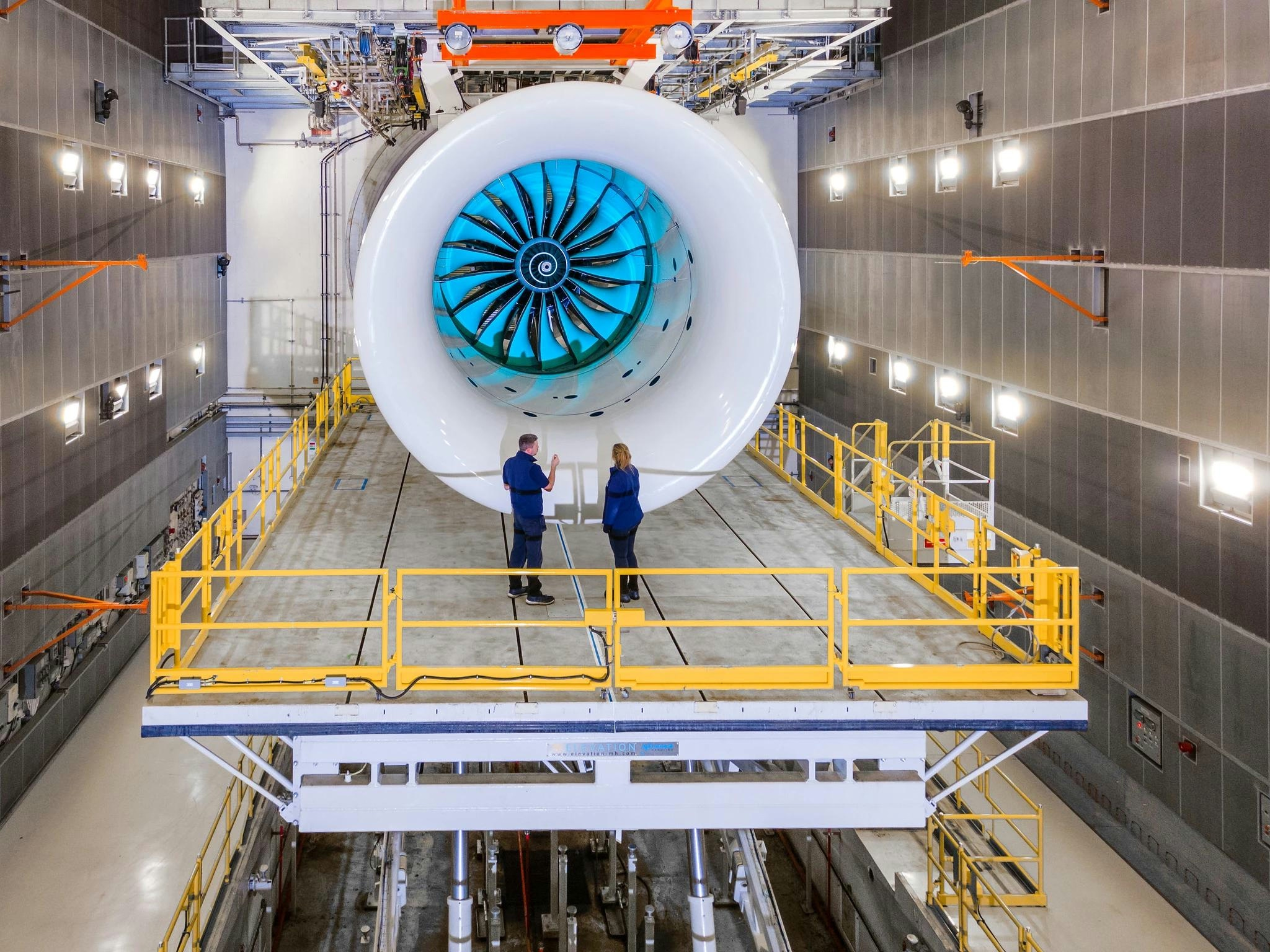
Jet Engines Powered by Used Cooking Oil
Jet Engines Powered by Used Cooking Oil
India is pioneering a novel approach to sustainable aviation fuel (SAF) by converting used cooking oil into jet fuel, marking a significant step in the country’s green aviation ambitions. The Panipat refinery, operated by Indian Oil, has become the first facility in India to produce SAF from used cooking oil, signaling a new phase in the nation’s efforts to reduce carbon emissions in the aviation sector. This development, certified by Cotecna’s Indian division, a Swiss inspection firm, confirms the refinery’s capability to transform kitchen waste into a viable alternative to conventional jet fuel.
This initiative aligns with international climate goals, particularly the Carbon Offsetting and Reduction Scheme for International Aviation (CORSIA), a United Nations program aimed at reducing the environmental impact of air travel. India has committed to blending 1% SAF in international flights by 2027, increasing to 2% by 2028, with similar mandates expected for domestic aviation.
India’s Biofuel Journey and Emerging Prospects
India’s engagement with sustainable aviation fuels has been marked by both innovation and challenges. Early efforts included SpiceJet’s 2018 flight using a blend of traditional aviation turbine fuel and jatropha-based biofuel, developed by the Indian Institute of Petroleum. IndiGo followed with a 10% SAF blend on a ferry flight from Toulouse to Delhi in 2022. While these flights demonstrated the potential of biofuels, widespread adoption has been limited.
Jatropha, once considered a promising biofuel crop, ultimately failed to meet expectations due to low yields and competition with food crops. In contrast, ethanol has seen more success, driven by government support under Union Minister Nitin Gadkari. India achieved a 20% ethanol blend in petrol by 2025, five years ahead of schedule, resulting in substantial foreign exchange savings and a dramatic increase in ethanol production from 38 crore litres in 2014 to over 661 crore litres.
Looking ahead, the government is focusing on ethanol-based SAF through the alcohol-to-jet (ATJ) pathway, with ambitious targets to produce 30 billion litres annually from crop residues and municipal waste. Although SAF currently remains more expensive than conventional aviation fuel, the environmental advantages are fostering growing interest among policymakers and industry stakeholders.
Challenges and the Road Ahead
Despite the promising developments, several obstacles could impede the rapid expansion of SAF in India. Regulatory hurdles, competition with established fossil fuels, and the need for new infrastructure pose significant challenges. The market’s response will depend on the perceived environmental benefits and whether SAF can become cost-competitive. Airlines and fuel producers may also explore alternative sustainable fuels or enhance existing technologies to maintain their competitive edge.
As India advances its sustainable aviation agenda, the critical question remains whether bio-based fuels like used cooking oil can transition from experimental projects to mainstream aviation fuel sources. For now, the transformation of recycled cooking oil into jet fuel represents a symbolic and practical step toward a greener future in aviation.
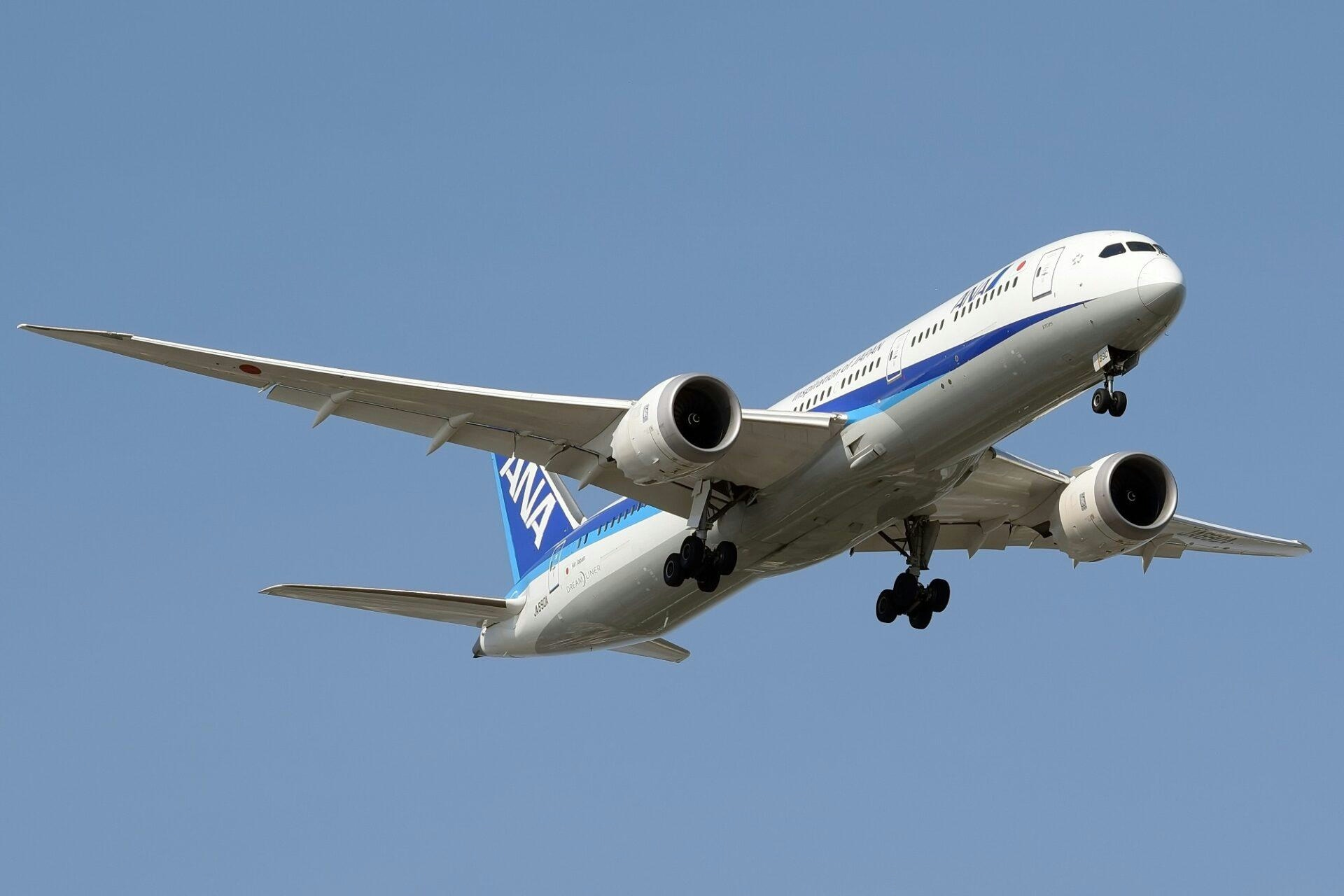
ANA Introduces AI Technology to Predict Turbulence with 86% Accuracy
ANA Introduces AI Technology to Predict Turbulence with 86% Accuracy
Advancing Flight Safety through Artificial Intelligence
All Nippon Airways (ANA) has implemented a pioneering artificial intelligence (AI) system designed to predict turbulence with an accuracy rate of 86 percent, marking a significant advancement in aviation safety and passenger comfort. Developed in collaboration with BlueWX, a company born from a partnership with Keio University, the system utilizes deep learning algorithms trained on a decade of turbulence data. This initiative positions ANA as the first airline to deploy BlueWX’s technology fleet-wide following successful trials involving 2,500 pilots.
The project, which began in 2019 and culminated in the establishment of BlueWX in 2023, addresses a longstanding challenge in the airline industry. Hiroyuki Kometani, ANA’s Executive Vice President of Operation Division, emphasized the importance of this development, stating that the integration of AI and deep learning techniques will provide a more reliable and comfortable travel experience for passengers. The AI model demonstrated superior performance compared to traditional turbulence forecasting methods during extensive testing phases that started in 2021, with pilots reporting enhanced reliability and real-world effectiveness.
Addressing a Growing Safety Concern
Turbulence remains a critical safety and operational issue for airlines globally. According to the National Transportation Safety Board (NTSB), turbulence is responsible for 30 to 50 percent of aviation incidents, with recent years witnessing serious injuries and fatalities, including the death of a British passenger in 2024. Beyond the immediate safety risks, turbulence contributes to significant economic losses through cargo damage, equipment repairs, and delays caused by unscheduled inspections.
Kaz Watanabe, CEO of BlueWX, highlighted the increasing severity of turbulence, partly attributed to climate change, and underscored the urgency of deploying advanced predictive technologies. While ANA’s AI system represents a major technological breakthrough, the airline acknowledges ongoing challenges in maintaining the model’s accuracy and reliability across diverse flight conditions and altitudes. Ensuring consistent performance in varying weather scenarios will be essential as the system is integrated more broadly.
Industry Impact and Future Prospects
The introduction of this AI-powered turbulence prediction system has been met with positive market reactions, with expectations that it will enhance passenger confidence and potentially increase demand for ANA’s services. Industry analysts anticipate that other airlines may accelerate the development and adoption of similar AI technologies to improve their turbulence forecasting capabilities, aiming to match ANA’s gains in operational efficiency and customer satisfaction.
Looking forward, BlueWX intends to expand its AI-driven weather forecasting solutions to additional airlines, seeking to elevate safety standards and operational effectiveness throughout the aviation sector. This development signals a broader shift towards leveraging artificial intelligence to address complex challenges in air travel.
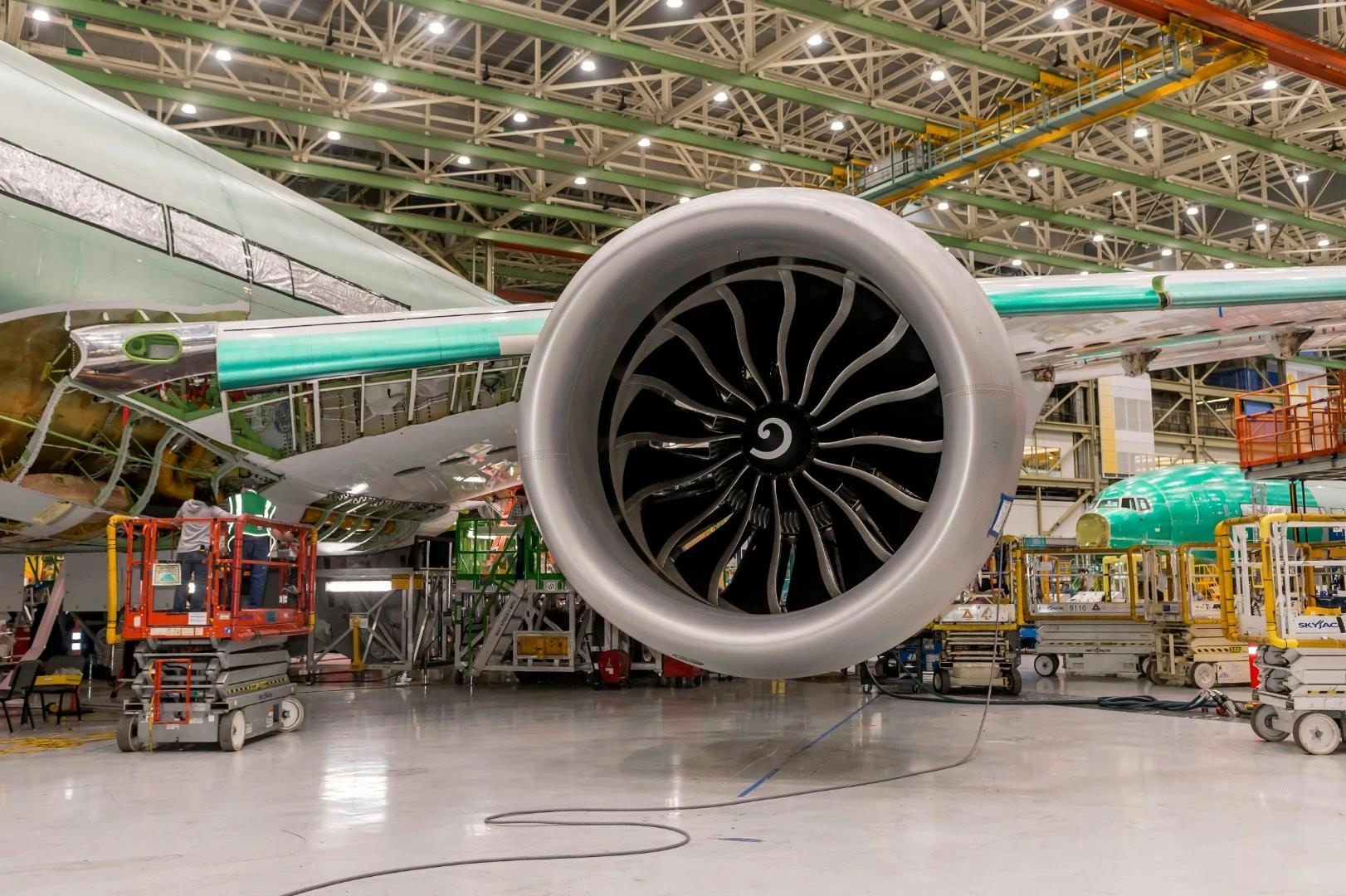
Why The Boeing 777X's Engines Have Such A Large Diameter
Why The Boeing 777X's Engines Have Such a Large Diameter
The Boeing 777X is immediately recognizable by its exceptionally large engines, a striking feature that reflects more than just engineering ambition. These engines are a calculated response to the evolving demands of contemporary commercial aviation, shaped by the aircraft’s performance requirements and the competitive pressures within the aerospace industry.
Engineering to Meet Ambitious Performance Goals
The 777X series, comprising the 777-8 and 777-9 models, is intended to replace the successful 777-300ER and directly challenge the Airbus A350. Boeing’s objectives for the 777X include extended range, increased passenger capacity, and reduced environmental impact. To fulfill these goals, the aircraft requires engines capable of delivering substantial thrust while optimizing fuel efficiency and minimizing noise emissions.
Central to this effort is the General Electric GE9X engine, the largest and most advanced commercial jet engine ever developed. Specifically designed for the 777X, the GE9X boasts a fan diameter of 134 inches (3.4 meters), which extends to 161 inches (4 meters) when including the nacelle—surpassing the width of a Boeing 737 fuselage. This considerable size facilitates a high bypass ratio of 10:1 and an industry-leading pressure ratio of 60:1. These specifications enable the engine to produce up to 110,000 pounds of thrust, ensuring the 777X can efficiently operate on long-haul international routes.
The Rationale Behind the Large Diameter
The substantial diameter of the GE9X engine is a deliberate design choice driven by the 777X’s operational demands. With a maximum takeoff weight exceeding 775,000 pounds for the 777-9 variant, the aircraft necessitates powerful engines capable of lifting heavy payloads across vast distances. Larger fan diameters allow the engine to move greater volumes of air at lower speeds, which enhances thrust generation while simultaneously reducing noise and improving fuel efficiency. These factors are critical in complying with stringent global emissions and noise regulations.
In addition to size, the GE9X incorporates advanced materials and manufacturing techniques that distinguish it from its predecessor, the GE90-115B. The use of ceramic matrix composites, 3D-printed components, and composite fan blades reduces overall engine weight while increasing durability and heat resistance. These innovations contribute to a 10% reduction in fuel consumption compared to earlier models, offering airlines significant operational cost savings and environmental benefits.
Market Dynamics and Competitive Pressures
The design of the 777X’s engines also reflects the intense competition within the aerospace sector. Manufacturers such as CFM International and GE Aviation are engaged in a technological race to produce large-diameter engines that deliver superior performance and efficiency. The success of the GE9X will largely depend on its reliability, cost-effectiveness, and ability to outperform rival engines in real-world operations.
This competitive environment is expected to drive further advancements as other manufacturers seek to match or exceed the capabilities of the GE9X. The reception of the 777X’s engines by airlines and the broader market will play a crucial role in shaping Boeing’s future production and sales strategies.
Conclusion
The oversized engines of the Boeing 777X are the result of a strategic blend of necessity and innovation. Designed to power one of the largest twin-engine aircraft in the world, they embody the evolving requirements of global aviation and the relentless competition that fuels technological progress in the industry.

Magnetic MRO Prioritizes AI in Procurement and Maintenance Software
Magnetic MRO Advances AI Integration in Procurement and Maintenance Systems
Magnetic MRO has successfully implemented a two-way integration between SkySelect’s AI-powered parts procurement platform and AMOS, the maintenance management software developed by Swiss Aviation Software (Swiss-AS). This integration facilitates a seamless, real-time exchange of data between the two systems, streamlining procurement workflows and maintenance operations. By utilizing SkySelect’s extensive network of verified suppliers, Magnetic MRO seeks to digitize and optimize its entire procurement process, from initial request through to final delivery.
Strategic Partnerships and Operational Impact
Kaire Kalve, Head of Supply Chain at Magnetic Group, underscored the critical role of strong partnerships in executing complex digital initiatives. Kalve noted that enduring collaborations with SkySelect and Swiss-AS were instrumental in the success of the integration project. “Completing the full integration has significantly optimized our procurement processes, enabling us to operate in a data-driven manner across the board—from tangible cost savings to shortened delivery times,” she explained.
Erkki Brakmann, CEO and co-founder of SkySelect, emphasized the competitive advantages afforded by the new integration. He highlighted the importance of speed and live connectivity in gaining an edge in MRO parts procurement. “Our rapid deployment of a two-way integration with AMOS at Magnetic MRO demonstrates the transformative potential of a well-connected supply chain. We are proud to have delivered a solution that fully digitizes and enhances the end-to-end procurement workflow in just a few days,” Brakmann stated.
Challenges and Industry Implications
While Magnetic MRO’s prioritization of AI in procurement and maintenance software marks a significant technological advancement, the company faces several challenges. Substantial investments in technology infrastructure and staff training are necessary to fully harness AI capabilities. Additionally, overcoming resistance from employees accustomed to traditional processes remains a key hurdle. The implementation also demands robust data management systems to support the sophisticated AI functionalities.
Despite these obstacles, Magnetic MRO’s initiative positions it ahead of competitors who may be slower to adopt AI-driven solutions. Although some industry players may approach such innovations with skepticism, the integration offers Magnetic MRO opportunities for enhanced efficiency and cost reduction. This development is likely to prompt competitors to accelerate their own digital transformation efforts, potentially leading to the creation of proprietary AI tools or new strategic partnerships.
By embracing AI and digital integration, Magnetic MRO aims to establish a new benchmark in operational efficiency and supply chain management within the aviation maintenance sector.

United Airlines Restores Flights Following Software Outage
United Airlines Resumes Operations Following Nationwide Software Disruption
United Airlines restored its flight operations late Wednesday after a significant software outage temporarily grounded numerous flights and caused widespread travel disruptions across the United States. The incident affected over 1,000 flights and led to extensive delays at key hubs including Chicago O’Hare, Denver, and Houston.
Details of the Outage and Its Impact
The disruption began at 5:12 p.m. Central Time on August 6, 2025, originating from a failure in United’s Unimatic system. This critical platform is responsible for distributing flight information to various operational systems, including those managing aircraft weight and balance calculations and tracking flight times. The failure halted departing flights for several hours, triggering a cascade of delays and cancellations throughout United’s network.
By Wednesday evening, United confirmed that the technical issue had been resolved. In an official statement, the airline acknowledged that while residual delays were expected, efforts were underway to restore normal operations. United also clarified that the outage was unrelated to recent cybersecurity incidents affecting the airline industry.
Flight tracking data from FlightAware indicated that 1,093 United flights—approximately 35% of its schedule—were delayed on Wednesday, with an additional 218 flights, or 7%, canceled. Delays continued into Thursday, with 5% of flights delayed and 4% canceled. At major airports such as Chicago O’Hare, Houston, and Newark, aircraft were observed waiting on taxiways either for departure clearance or available gates to disembark passengers.
Passenger Experience and Operational Response
Passengers endured prolonged waits on the tarmac, during which flight attendants distributed snacks and water to alleviate discomfort. At Washington Dulles International Airport, a United flight bound for Mexico City returned to the gate after nearly three hours on the tarmac, allowing passengers to disembark and stretch their legs in the terminal while awaiting further updates.
The Federal Aviation Administration (FAA) confirmed that ground stops were temporarily implemented for United flights at several major airports, including Denver, Houston, Newark, San Francisco, and Chicago. Importantly, the FAA emphasized that there was no risk to aircraft already in flight during the outage.
In response to the disruption, United announced it would waive change fees for affected travelers with bookings between August 7 and August 10. This policy applies to flights involving 14 cities, including Washington, Houston, London, and Frankfurt.
Industry Context and Outlook
This incident follows closely on the heels of a similar technology failure experienced by Alaska Air Group two weeks prior, which temporarily grounded its entire fleet. The recent disruption at United has heightened concerns within the industry regarding airline reliability and customer satisfaction. Competitors are reportedly monitoring the situation closely, potentially seeking strategic or public relations opportunities.
As the world’s largest airline by capacity, United is now focused on stabilizing its operations and minimizing further disruptions to its customers.
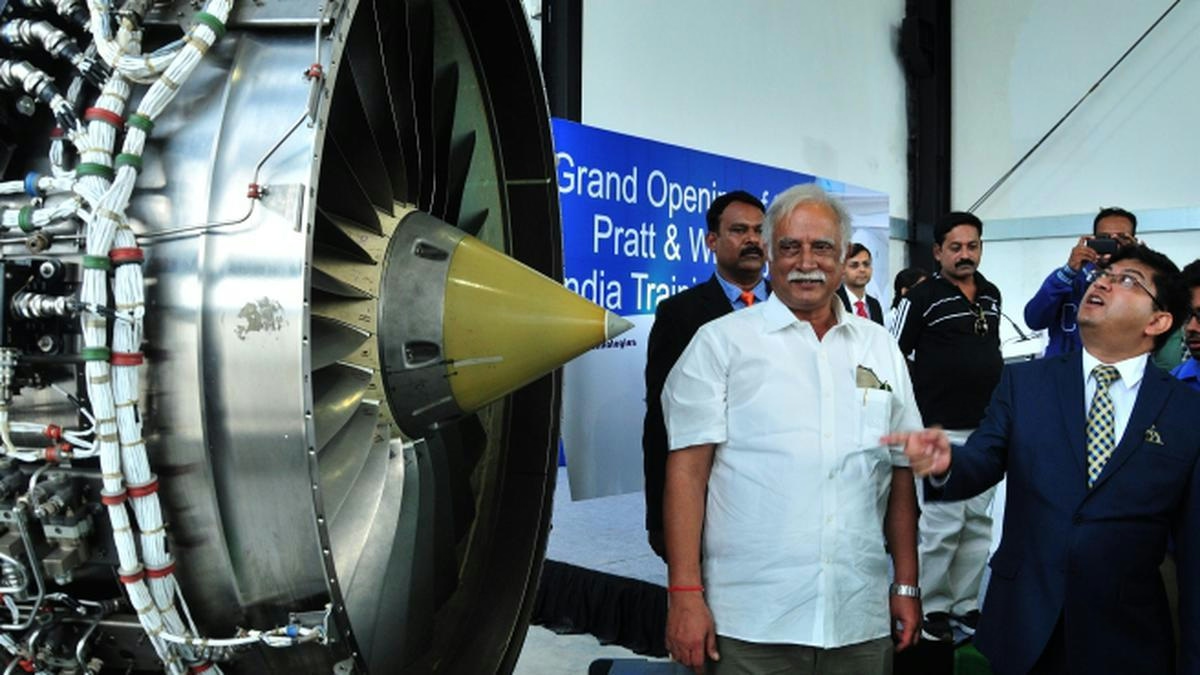
Palash Roy Chowdhury, Managing Director of Pratt & Whitney India
Palash Roy Chowdhury, Managing Director of Pratt & Whitney India
Pratt & Whitney, a subsidiary of United Technologies Corporation and a global leader in aerospace manufacturing, has sustained a significant presence in India for over seventy years. The company’s diverse portfolio encompasses large commercial engines, military propulsion systems, small jet and turboprop engines, as well as a broad range of power solutions tailored for general, regional, and civilian aviation sectors. Pratt & Whitney’s engines have been instrumental in powering numerous fleets across India, contributing substantially to the country’s aviation development.
Innovations and Technological Advancements
Among Pratt & Whitney’s recent technological breakthroughs, the Geared Turbofan (GTF) engine family stands out for its transformative impact on fuel efficiency, emissions reduction, noise abatement, and operational cost savings. Following two decades of rigorous research and development, the GTF series—including the PW1100G-JM engine, which is now in daily commercial service—has established new industry standards for performance and sustainability. The PW1100G-JM powers the Airbus A320neo family, while other certified variants such as the PW1500G, PW1400G-JM, PW1200G, and PW1900G are deployed on aircraft manufactured by Bombardier, Irkut, Mitsubishi, and Embraer, respectively.
Commitment to India and Strategic Initiatives
Pratt & Whitney’s dedication to the Indian market is further exemplified by several key initiatives. The Customer Training Centre in Hyderabad, certified by the Directorate General of Civil Aviation (DGCA) in April 2017, offers DGCA CAR147-approved training programs for aircraft engineers and technicians serving regional airlines. Since its inception in September 2015, the centre has garnered strong engagement and is positioned to play a vital role in cultivating local aviation expertise.
In addition, the company has introduced the EngineWise service brand, which provides predictive and responsive maintenance solutions designed to enhance operational reliability for its customers. Pratt & Whitney Canada has also entered into a maintenance contract with IndiGo for the PW127M engines, supporting the airline’s ATR72-600 fleet on regional routes through its Fleet Management Programme (FMP).
Challenges and Supply Chain Concerns
Despite its expanding footprint in India, Pratt & Whitney faces emerging challenges, particularly regarding its supply chain dependencies. A critical issue is the reliance on China for rare earth magnets, essential components in modern aircraft engines. This dependency reflects broader vulnerabilities observed in India’s electric vehicle industry and presents strategic risks to Pratt & Whitney’s innovation pipeline and supply chain resilience. Investors are closely monitoring the company’s capacity to manage potential disruptions amid ongoing geopolitical tensions. Concurrently, competitors are actively seeking alternative suppliers and investing in domestic production capabilities to mitigate similar risks.
As Pratt & Whitney continues to deepen its engagement in India, addressing these supply chain vulnerabilities will be crucial to maintaining its leadership in aerospace technology and supporting India’s ambitions in aviation and advanced manufacturing.
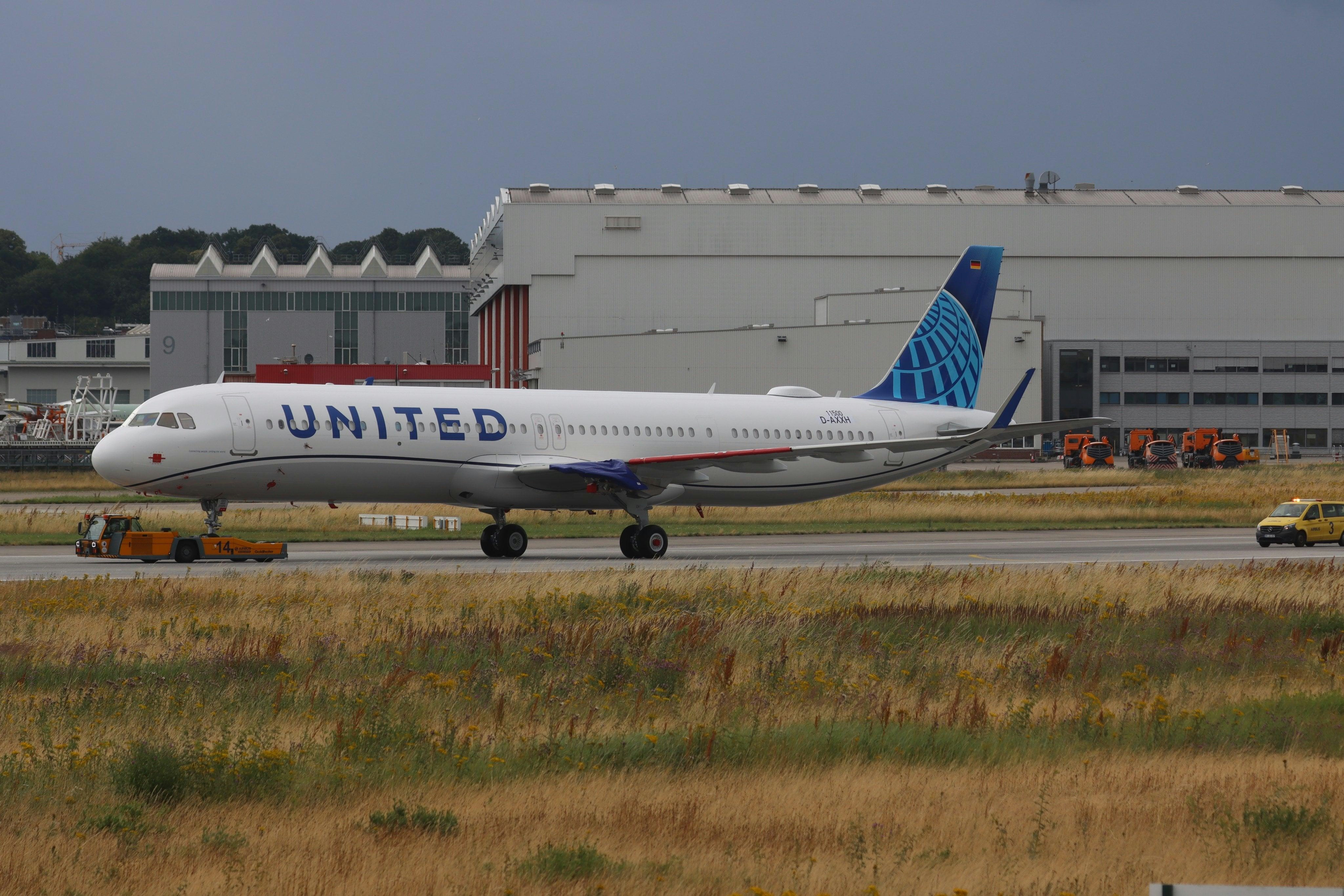
Two Six-Year-Old Airbus A321neos Sold for Spare Parts
Two Six-Year-Old Airbus A321neos Sold for Spare Parts Amid Industry Shortages
Two Airbus A321neo aircraft, each only six years old, are being dismantled for spare parts as the aviation sector grapples with persistent supply chain disruptions. Previously operated by IndiGo, these jets have been acquired by aftermarket specialist Setna iO. Despite their relatively young age and the potential for decades of further service, the soaring value of their components amid ongoing shortages has made parting out the aircraft more financially attractive than continued operation.
Setna iO confirmed the purchase of the two 2019-built A321neos via its LinkedIn page. Both aircraft are equipped with high gross weight enhanced landing gear, Honeywell GTCP131-9A auxiliary power units, GTF nacelles, and advanced avionics. Notably, they are powered by Pratt & Whitney PW1133G-JM engines, which are in particularly high demand due to global parts scarcity. Industry sources indicate that the aircraft, registered as OE-IHD and OE-IHH (formerly VT-IUD and VT-IUE with IndiGo), were ferried to Castellon, Spain, in early May after completing their final commercial flights in late February.
The first aircraft, VT-IUD, was delivered on May 16, 2019, and logged 18,705 flight hours and 9,210 cycles. The second, VT-IUE, delivered on May 20, 2019, accumulated 19,374 flight hours and 9,675 cycles. Both jets were leased from UK-based Deucalion Aviation and configured to seat 222 passengers in an all-economy layout. Their removal from IndiGo’s fleet in February 2025 represents an unusually early retirement for aircraft of this type, which typically remain in service for much longer periods.
Economic Rationale Behind Early Dismantling
The decision to scrap such young airframes is particularly striking given the current shortage of both aircraft and spare parts. Market valuations from ch-aviation place each jet’s worth at over $43 million, while aviation consultancy Cirium estimates their part-out value between $45 million and $56.5 million, depending on engine condition. The engines alone could command between $15.2 million and $21.4 million each. By contrast, the market lease rate for comparable aircraft is approximately $350,000 per month, or $4.2 million annually. Over a hypothetical extended service life of 20 years, each aircraft could generate between $60 million and $70 million in rental revenue.
Industry analysts suggest that the owners are prioritizing immediate financial returns by selling the aircraft for parts rather than navigating the uncertainties of long-term leasing in a volatile market environment.
Implications for the Aviation Market
The sale and dismantling of such young aircraft may have significant repercussions across the aviation aftermarket. Regulatory compliance and market dynamics could become increasingly complex as competitors adjust their spare parts strategies or seek alternative suppliers. This development may also influence the leasing market, as demonstrated by airlines such as China’s Loong Air, which leases A321neos from CDB Aviation. Such shifts could prompt changes in fleet management and operational strategies among lessors and airlines.
As airlines and manufacturers continue to contend with supply chain bottlenecks, the industry’s emphasis on cost-effective solutions and competition for scarce resources is expected to intensify. The timeline for relief from the current parts shortage remains uncertain, compelling the market to adapt to these evolving challenges.

Portuguese President Approves TAP Privatization
Portuguese President Endorses TAP Air Portugal Privatization
Portuguese President Marcelo Rebelo de Sousa has formally approved a government decree authorizing the privatization of TAP Air Portugal, marking a pivotal development in the future of the national carrier. The legislation sets a clear timeline for the process: interested investors will have 60 days to prequalify, followed by a 90-day period to submit non-binding proposals to acquire up to a 44.9% stake in the airline.
Background and Investor Interest
This move follows a previous attempt to sell a majority stake of at least 51% in TAP, which President de Sousa vetoed in October 2023 due to concerns over transparency and the state’s capacity to maintain oversight of a company considered strategically important for Portugal. After the national elections in May 2025, the newly formed government reaffirmed its commitment to privatization, opting instead to offer a minority share. The president’s approval came after government officials provided assurances regarding the terms of the sale and the mechanisms that would ensure continued state oversight.
Several major European airline groups, including Lufthansa Group, Air France-KLM, and IAG International Airlines Group, have already expressed interest in becoming shareholders. Their involvement signals significant international attention and potential shifts in the competitive landscape of the region’s aviation sector.
Challenges and Market Implications
The privatization process is expected to encounter several challenges. Navigating the complex regulatory environment of the airline industry and managing the transition from public to private ownership will require careful coordination. Furthermore, the government and TAP’s management must address concerns among employees about job security and working conditions during this period of change.
Market reactions will likely depend on investor confidence in the new ownership structure and the strategic direction adopted by TAP. Competitors may respond by adjusting their operational strategies, including pricing and efforts to protect or expand their market share in the region.
As the privatization unfolds, attention will focus on how effectively the government manages these complexities and how the market and TAP’s workforce respond to the evolving situation.
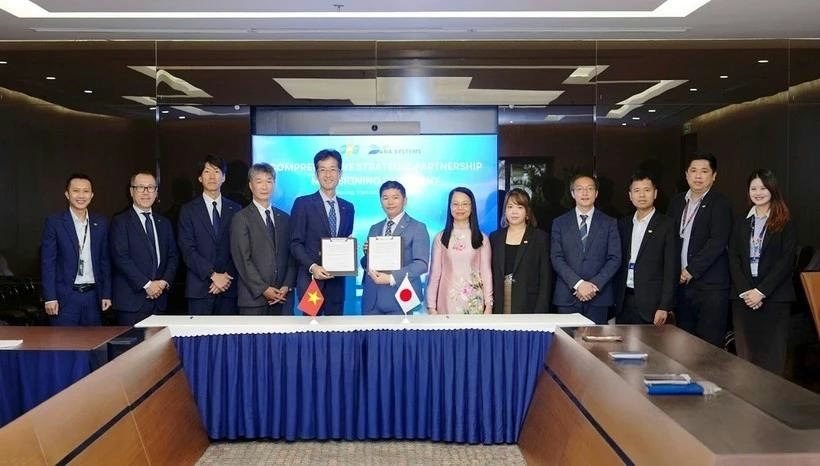
FPT and ANA Systems Form Partnership to Advance Digital Innovation in Aviation
FPT and ANA Systems Form Partnership to Advance Digital Innovation in Aviation
FPT Corporation and ANA Systems have announced a strategic partnership designed to accelerate digital innovation within the aviation industry. The collaboration aims to establish a joint operational framework to enhance the efficiency, stability, and ongoing improvement of IT infrastructure across the ANA Group, which includes All Nippon Airways (ANA), Japan’s largest airline and a Skytrax five-star carrier for 12 consecutive years.
Enhancing IT Infrastructure and Talent Development
This partnership will streamline the management and delivery of IT services throughout the ANA Group and its affiliates. Leveraging the strong cultural and economic ties between Japan and Vietnam, FPT and ANA Systems intend to promote cross-border talent exchange and foster digital career pathways through joint training and career development initiatives. Both companies emphasize their commitment to nurturing the next generation of global technology professionals.
FPT brings nearly two decades of experience in Japan, supported by a workforce of 4,500 employees across 17 offices and innovation hubs. The company also operates a dedicated offshore team of over 15,000 experts serving 450 customers worldwide. In 2024, FPT generated more than $500 million in revenue from Japan and aims to reach $1 billion by 2027, aspiring to rank among Japan’s top 15 IT firms.
ANA Systems, recognized as an “IT specialist group” within the airline industry, offers a comprehensive range of services including system planning and development, airport infrastructure deployment, system operation support, and digital transformation initiatives for ANA Group companies. Since 2021, the two companies have collaborated to accelerate digital transformation, secure human resources, and develop new technologies. The partnership now extends to the establishment of a joint laboratory, the development of new projects, and a human resources development program.
Challenges and Outlook
Despite the promising prospects, the partnership faces several challenges. Regulatory hurdles in the highly regulated aviation sector, technological integration complexities, and the need for substantial infrastructure development—especially for emerging services such as air taxis—pose significant obstacles. Furthermore, the disruptive nature of digital innovation in aviation may encounter skepticism from traditional stakeholders. Competitors are also likely to respond by accelerating their own advanced air mobility and digital transformation efforts to maintain market competitiveness.
Nonetheless, both FPT and ANA Systems express optimism about the collaboration. Chu Thi Thanh Ha, Chairwoman of FPT Software, FPT Corporation, stated, “This partnership creates a collaborative ecosystem where technology, talent, and cultural exchange can drive shared growth and innovation.” Masashi Ohya, President and Representative Director of ANA Systems, added, “We expect this to significantly contribute to the growth of our businesses and the acceleration of friendly relations between our two countries.”
The partnership was formalized during “Da Nang – 20 Years of Innovation,” a flagship technology event hosted by FPT. The event brought together over 400 delegates, including leaders from Microsoft, IDC, SAP, and other industry giants, to discuss the transformative impact of AI and cloud technologies and Vietnam’s emergence as a global innovation hub.
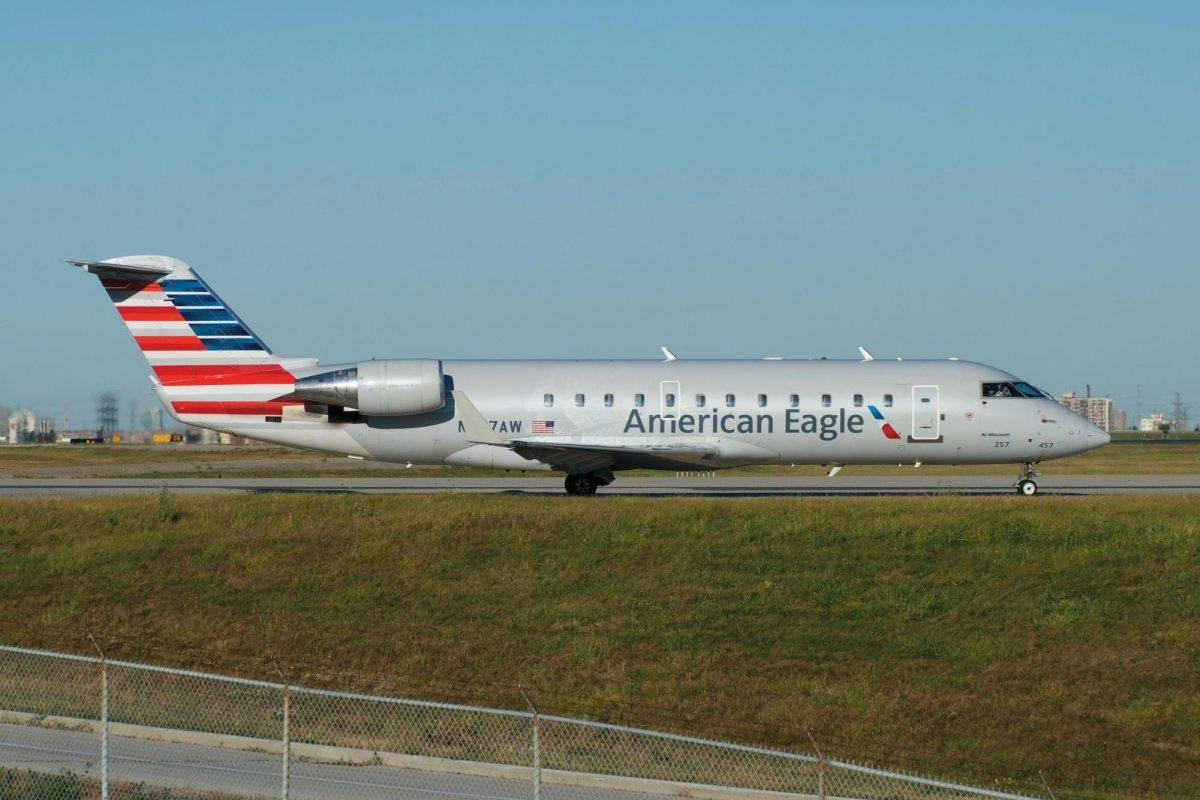
Air Wisconsin Wins First Essential Air Service Contract
Air Wisconsin Awarded First Essential Air Service Contract
The US Department of Transportation (DOT) has granted Air Wisconsin its inaugural Essential Air Service (EAS) contract, designating the regional carrier to operate flights between Parkersburg, Ohio, and Charlotte Douglas International Airport. The two-year agreement, commencing on October 1, 2025, will involve the deployment of 50-seat CRJ200 aircraft, providing 12 round-trip flights weekly.
Strategic Shift and Competitive Selection
This contract marks a significant strategic pivot for Air Wisconsin, which earlier in 2025 concluded its capacity purchase agreement with American Airlines to concentrate on EAS routes and charter operations. The Parkersburg-Charlotte route is presently served by Contour Airlines; however, Air Wisconsin’s bid was selected as the lowest-cost option among five contenders, including Breeze Airways, Contour, Denver Air Connection, and SkyWest Airlines.
Although the local airport authority initially favored SkyWest’s proposal, it ultimately endorsed Air Wisconsin’s offer. The decision was influenced by the carrier’s alignment with service requirements and the advantage of a direct connection to American Airlines’ Charlotte hub, complete with full codeshare benefits.
Operational Considerations and Industry Context
Air Wisconsin currently operates a fleet of 61 CRJ200 aircraft, with only two actively in service, according to ch-aviation data. The airline’s entry into the EAS market introduces new competitive dynamics, potentially prompting rival carriers to adjust pricing strategies or enhance service offerings to retain market share.
Nonetheless, Air Wisconsin faces several challenges in expanding into the EAS program. The carrier must ensure strict compliance with federal regulations, uphold high service quality standards, and effectively manage operational costs to meet program expectations. These demands are further complicated by broader industry concerns, notably cybersecurity risks. Recent events, such as Alaska Airlines’ temporary grounding following a suspected cybersecurity breach, have highlighted the critical need for robust digital security measures across the aviation sector.
As Air Wisconsin prepares to inaugurate its first EAS route, the airline industry continues to navigate an evolving landscape shaped by regulatory, operational, and security considerations. ch-aviation has sought comment from Air Wisconsin regarding the new contract.
Ask AeroGenie